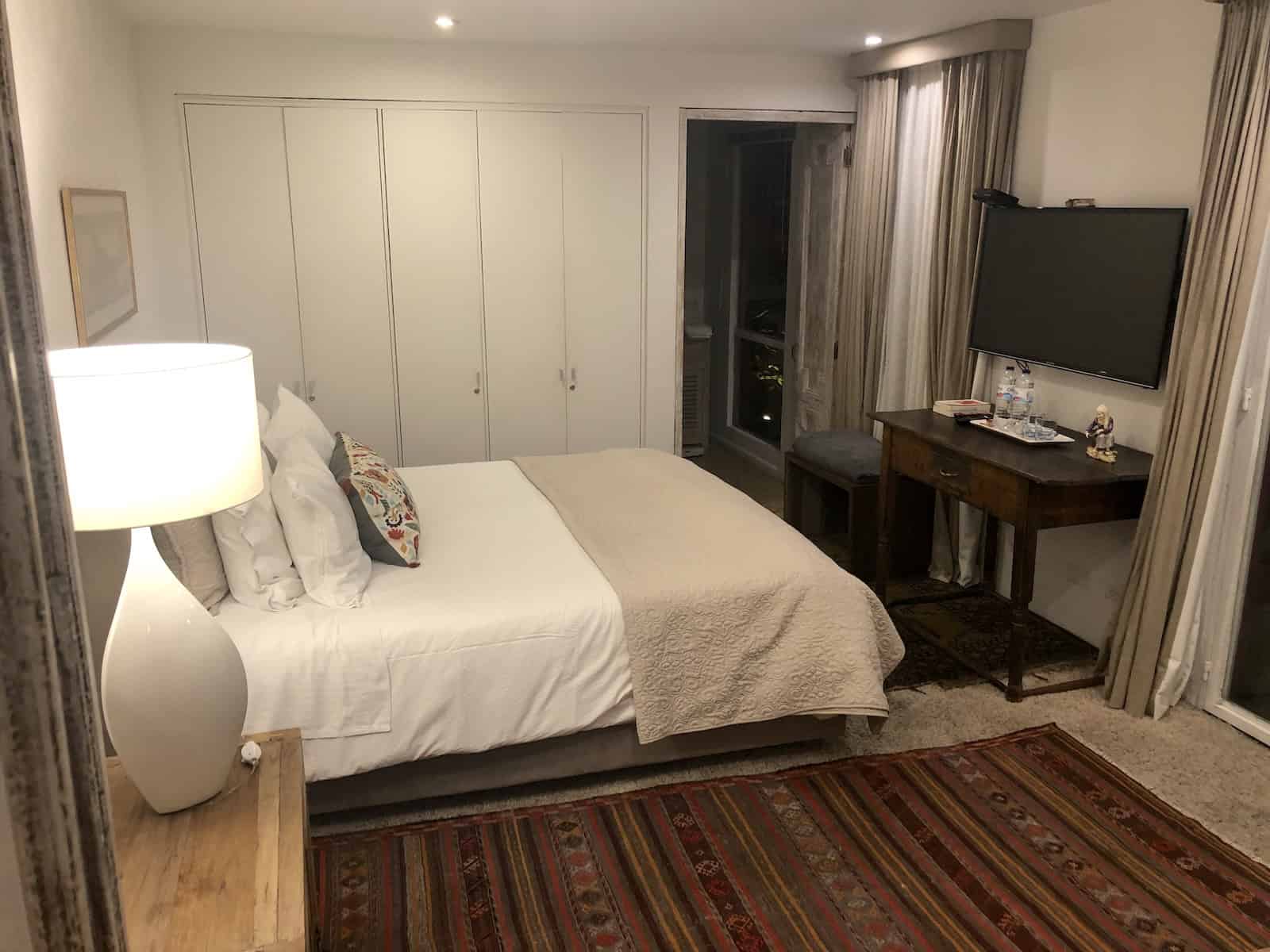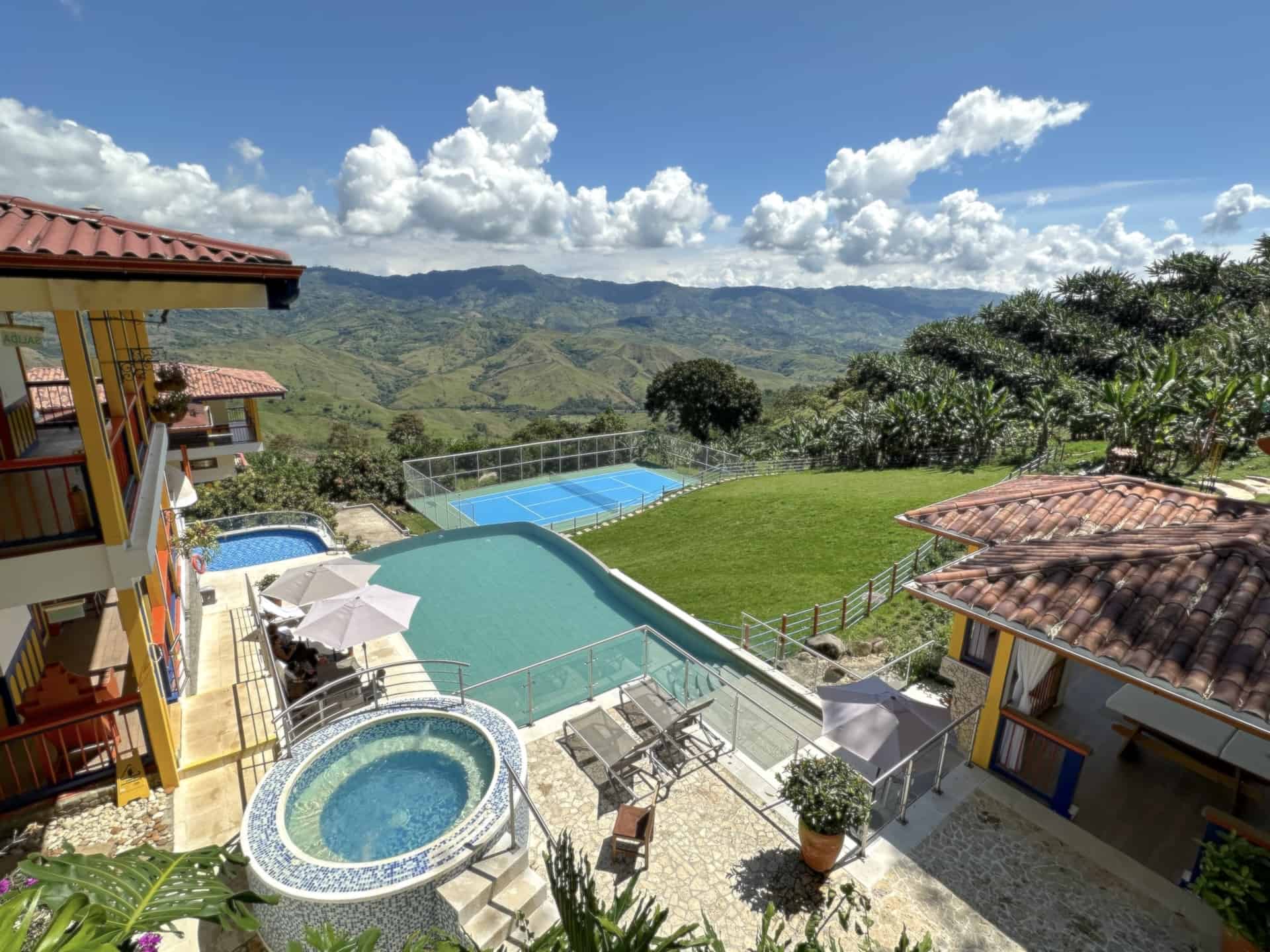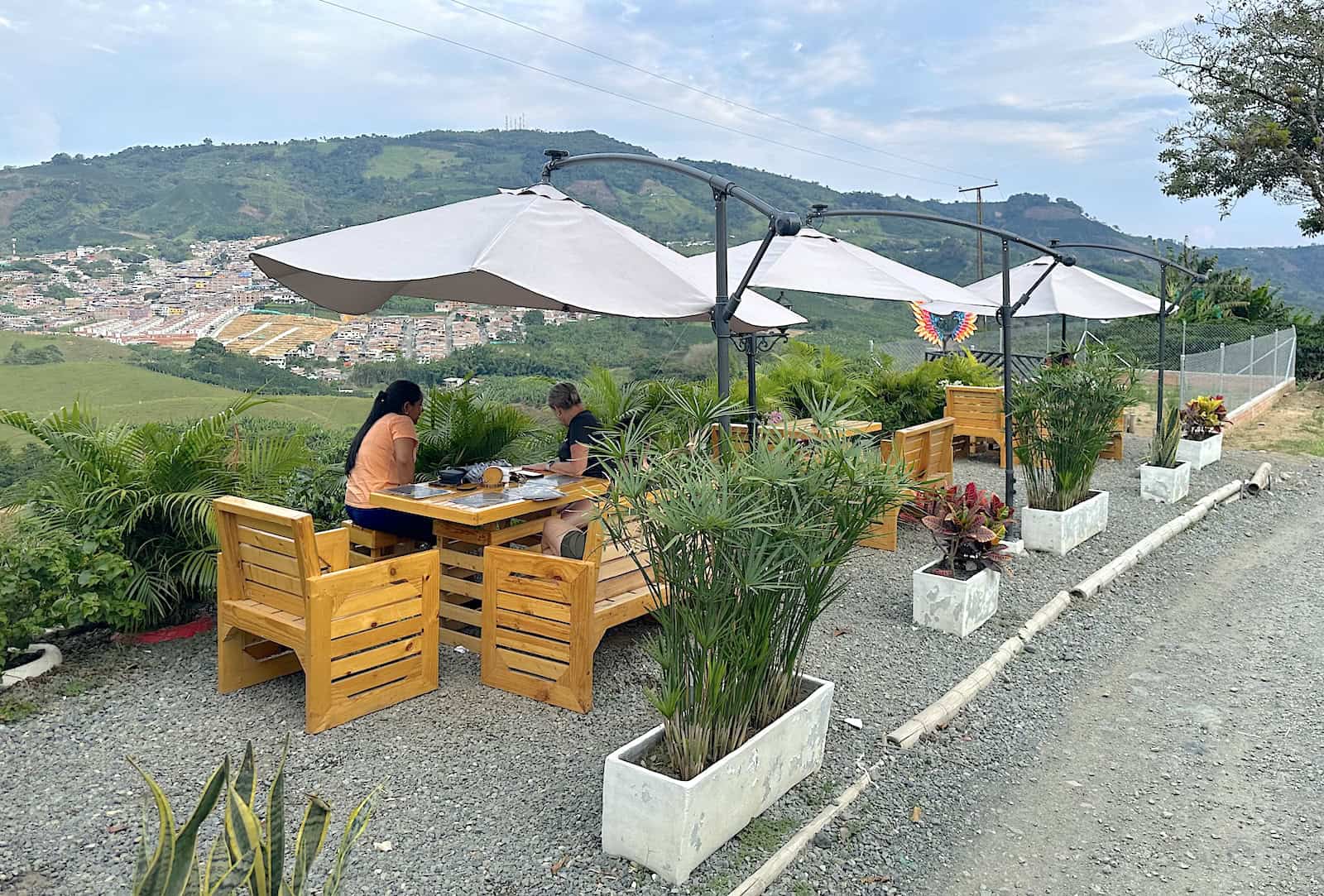Last updated on .
Edirnekapı is a neighborhood at the west end of the Fatih district in Istanbul, Turkey. It borders Ayvansaray and the Theodosian Walls.
Introduction to Edirnekapı
Edirnekapı corresponds to the Byzantine quarter of Deuteron. It had a significant Orthodox Christian population until the Istanbul Pogrom of 1955, when most of them left the area for good.
There’s very little to see outside the Chora Church, which has been closed as a museum and converted to a mosque, although there are a few lesser-known landmarks worth seeking out along Salma Tomruk Avenue.
Gate of Charisius
Edirnekapı is named for the Edirne Gate, which was the Gate of Charisius (Χαρισίου πύλη) during Byzantine times. Mehmed the Conqueror entered the city through this gate during the Fall of Constantinople, and Emperor Constantine XI established his command there.
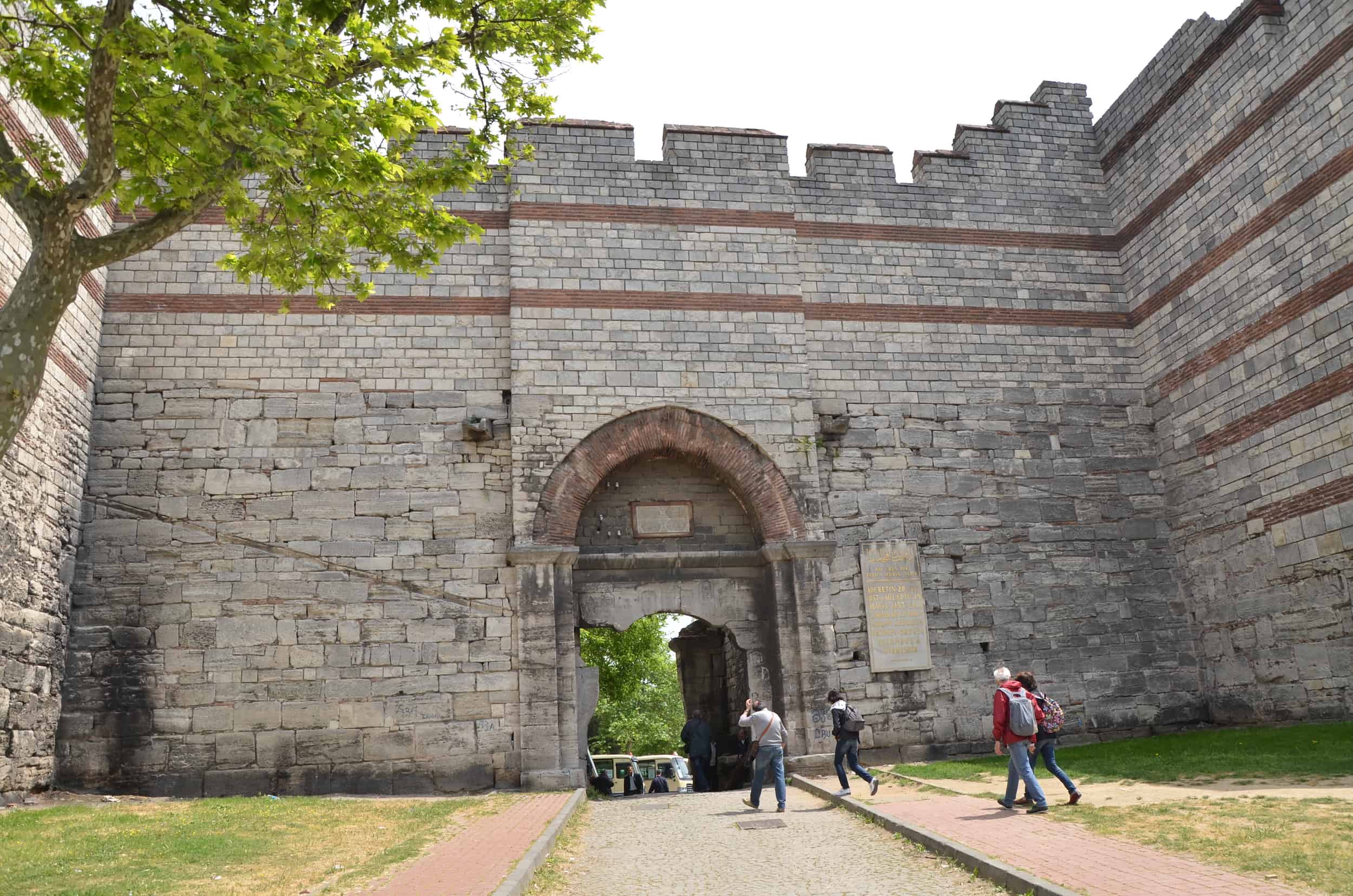
Mihrimah Sultan Mosque
The Mihrimah Sultan Mosque (Mihrimah Sultan Camii) is the most prominent landmark in Edirnekapı. It towers over the entire neighborhood sitting prominently on one of the highest points of the city.
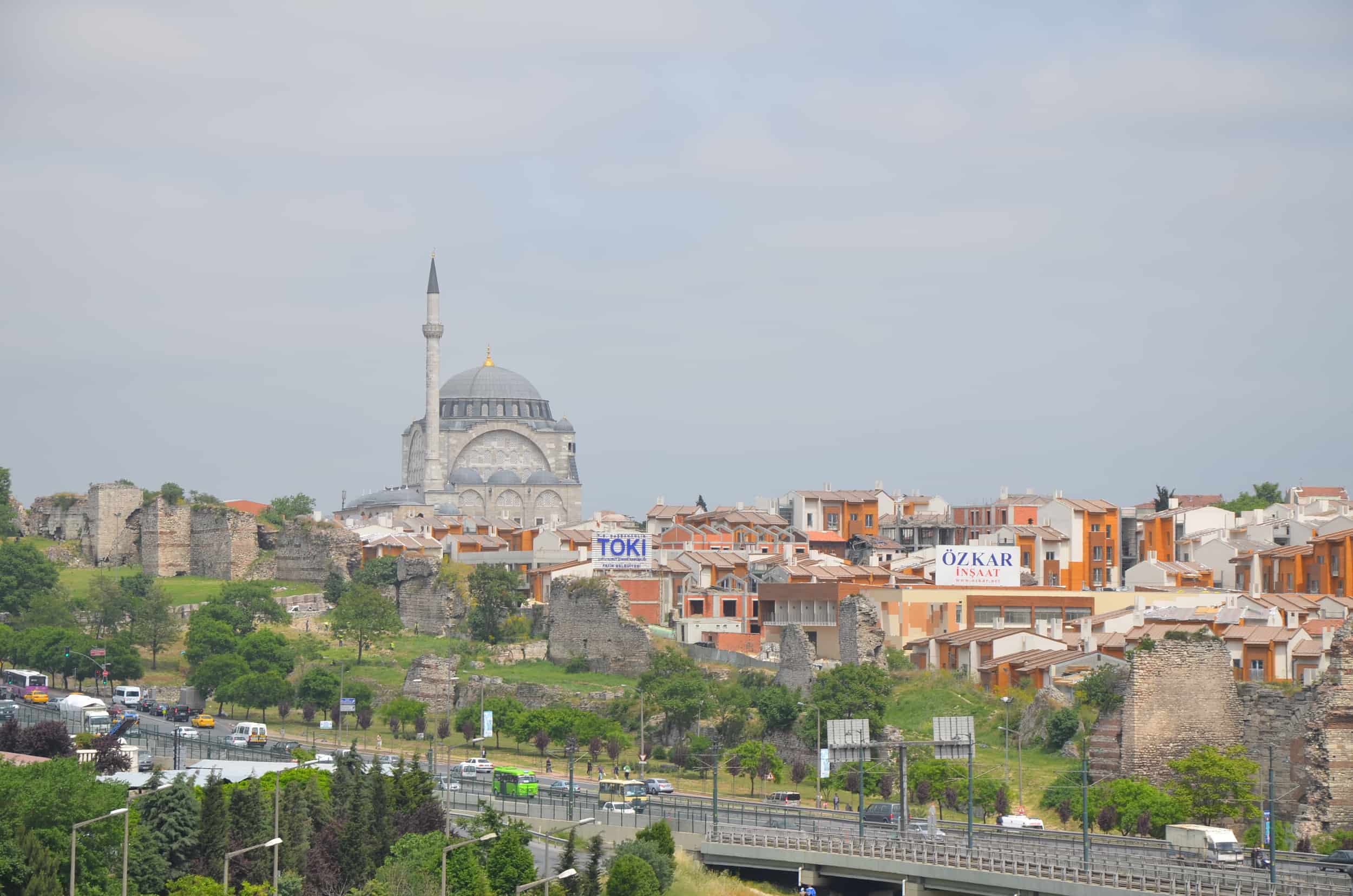
The mosque was commissioned by Mihrimah Sultan (1522-1578), the only daughter of Süleyman the Magnificent and the wife of Grand Vizier Rüstem Pasha (1500-1561). In addition to this mosque in Edirnekapı, Mihrimah Sultan also built another smaller mosque of the same name at Üsküdar.
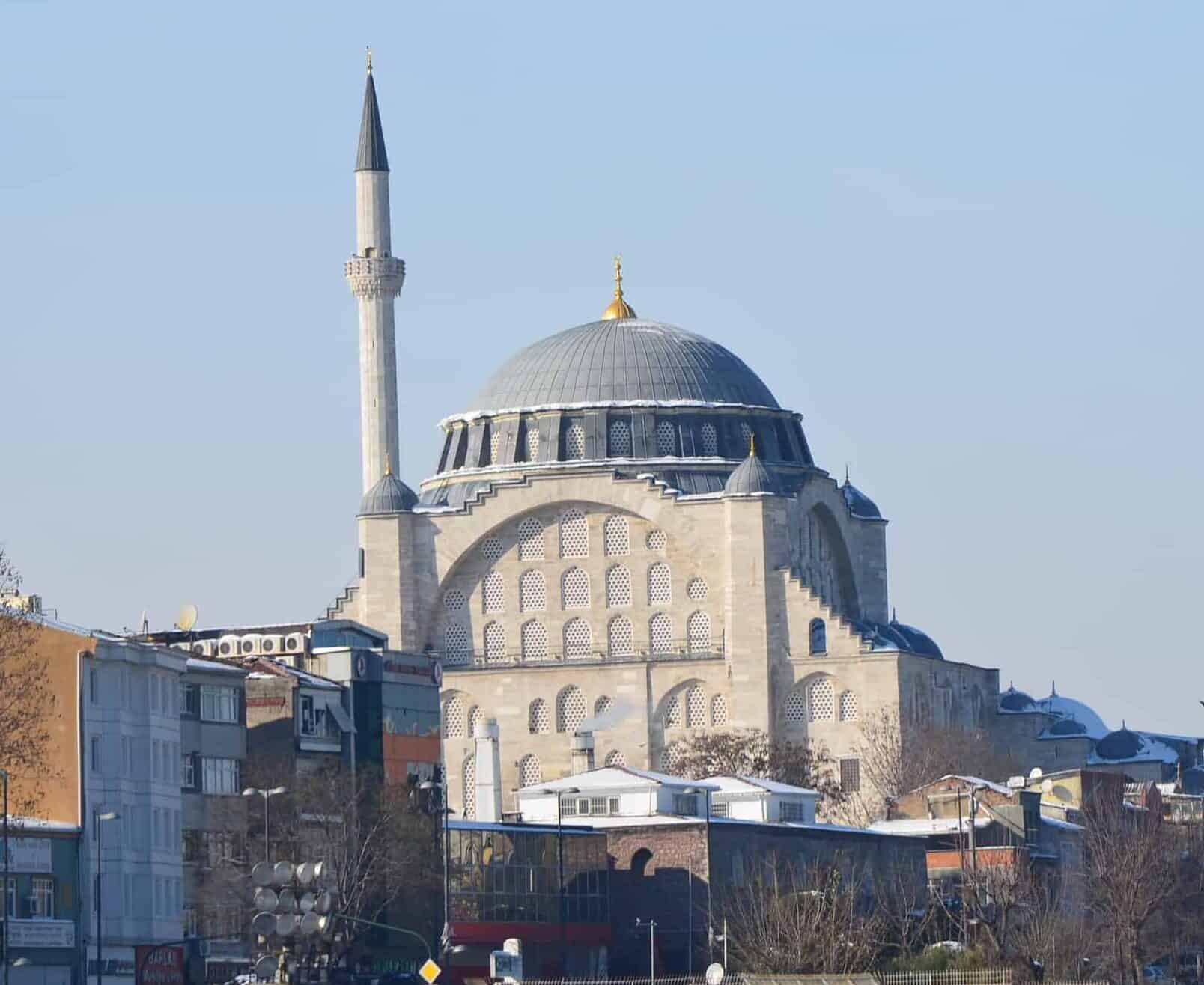
The Mihrimah Sultan Mosque was designed by Mimar Sinan (1490-1588) and built between 1563 and 1570. It was built as part of complex that contained a madrasa, hamam, and tombs. The mosque sits atop a terrace that contained shops underneath. They were meant to provide income to financially support the complex.
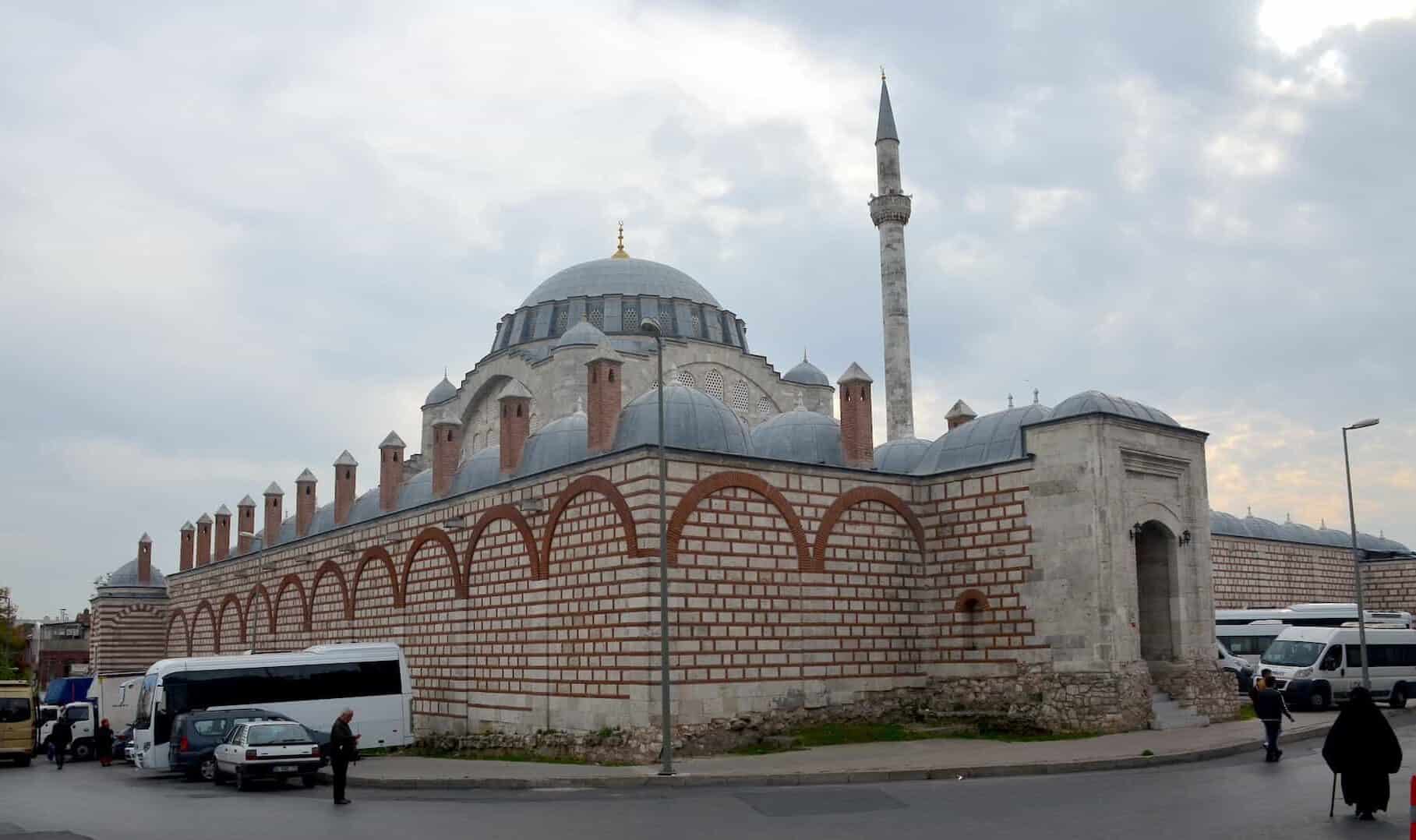
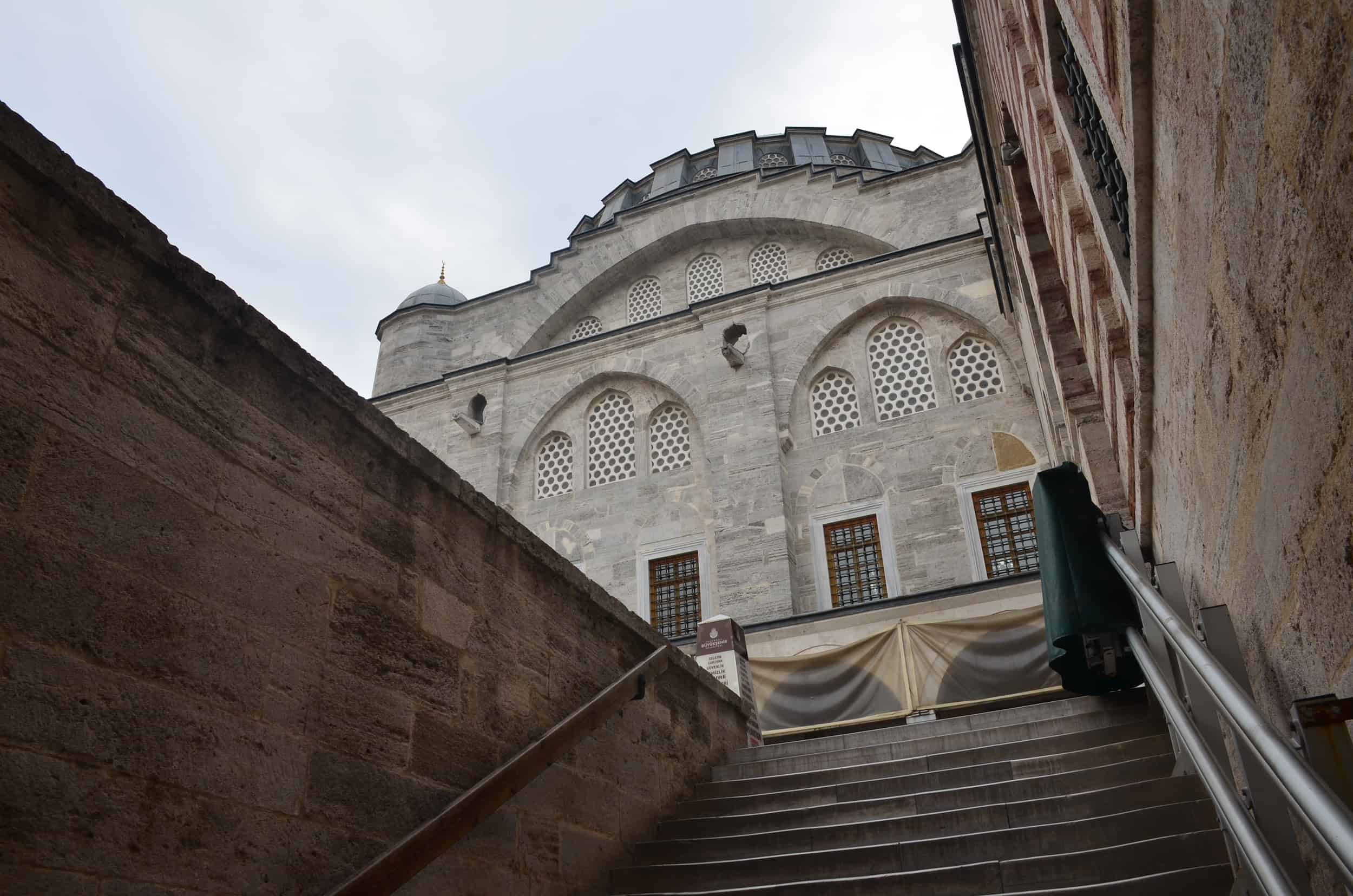
The minaret and main dome collapsed during an earthquake in 1766, and the minaret collapsed again during an earthquake in 1894. The dome was also damaged during the 1999 Izmit earthquake.
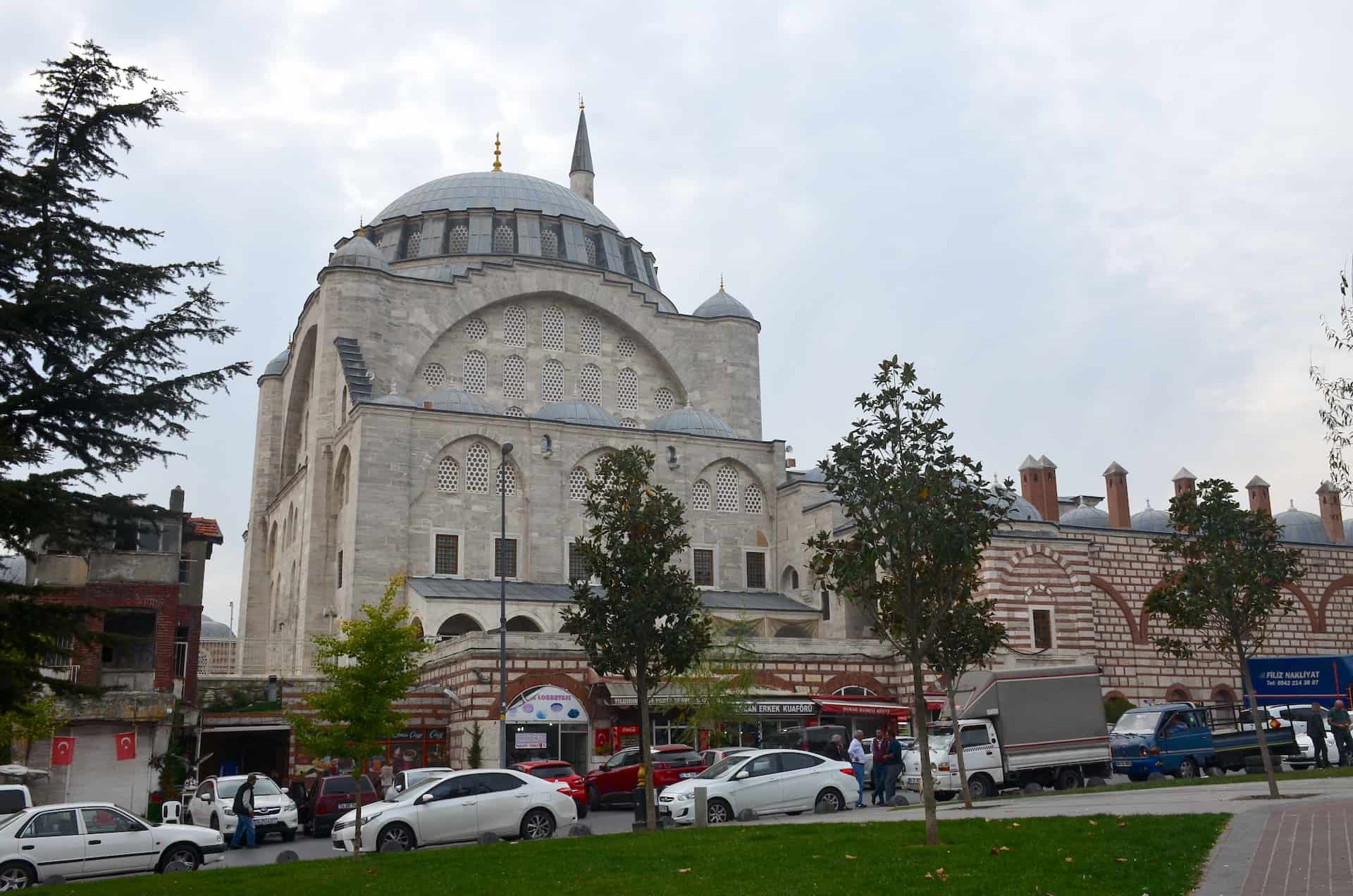
Features of the Mihrimah Sultan Mosque
The large courtyard is surrounded by a colonnaded portico on all four sides. Three sides contain the cells of the madrasa. In the center is an ablutions fountain (şadırvan) with 16 columns.
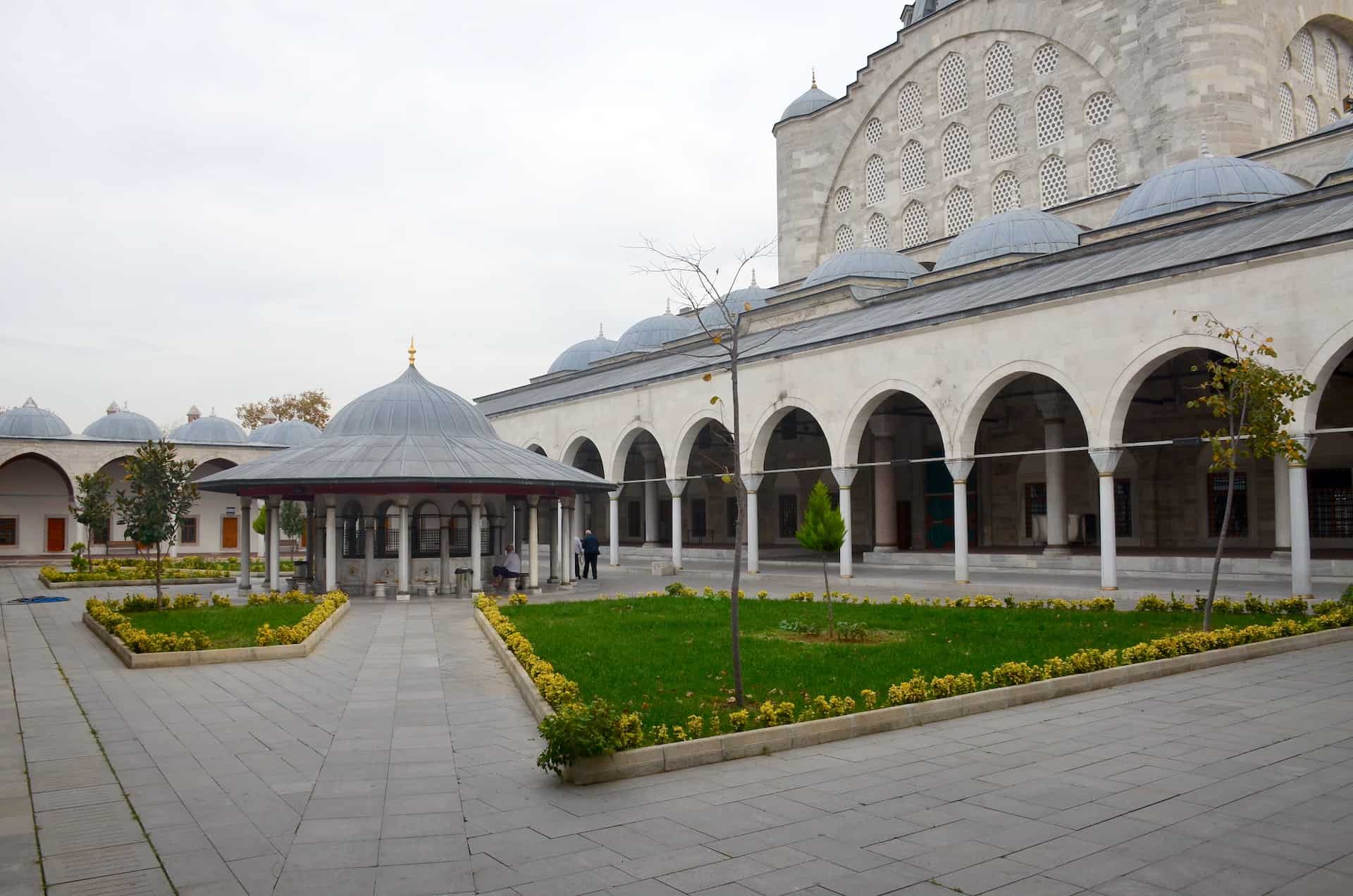
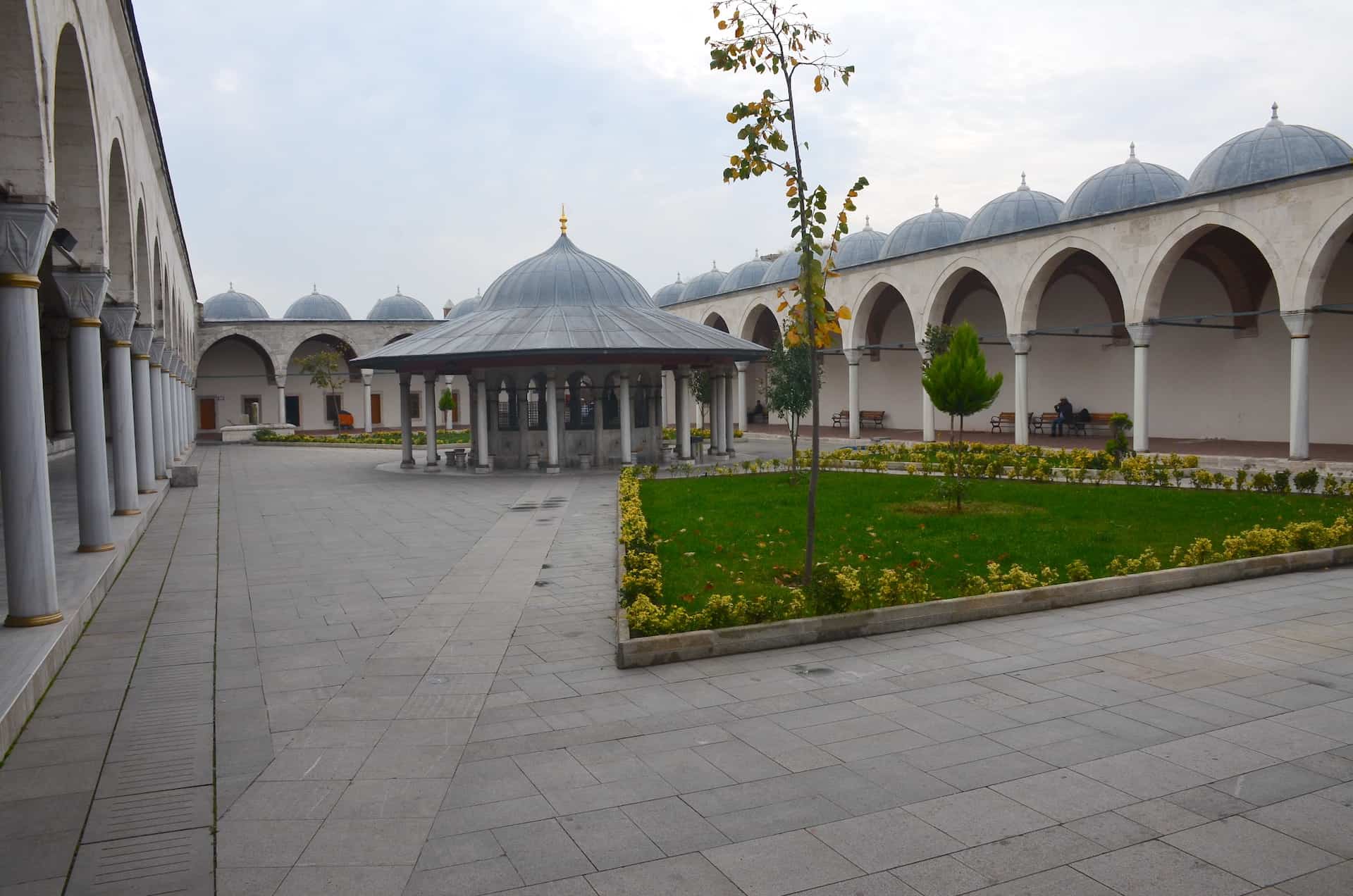

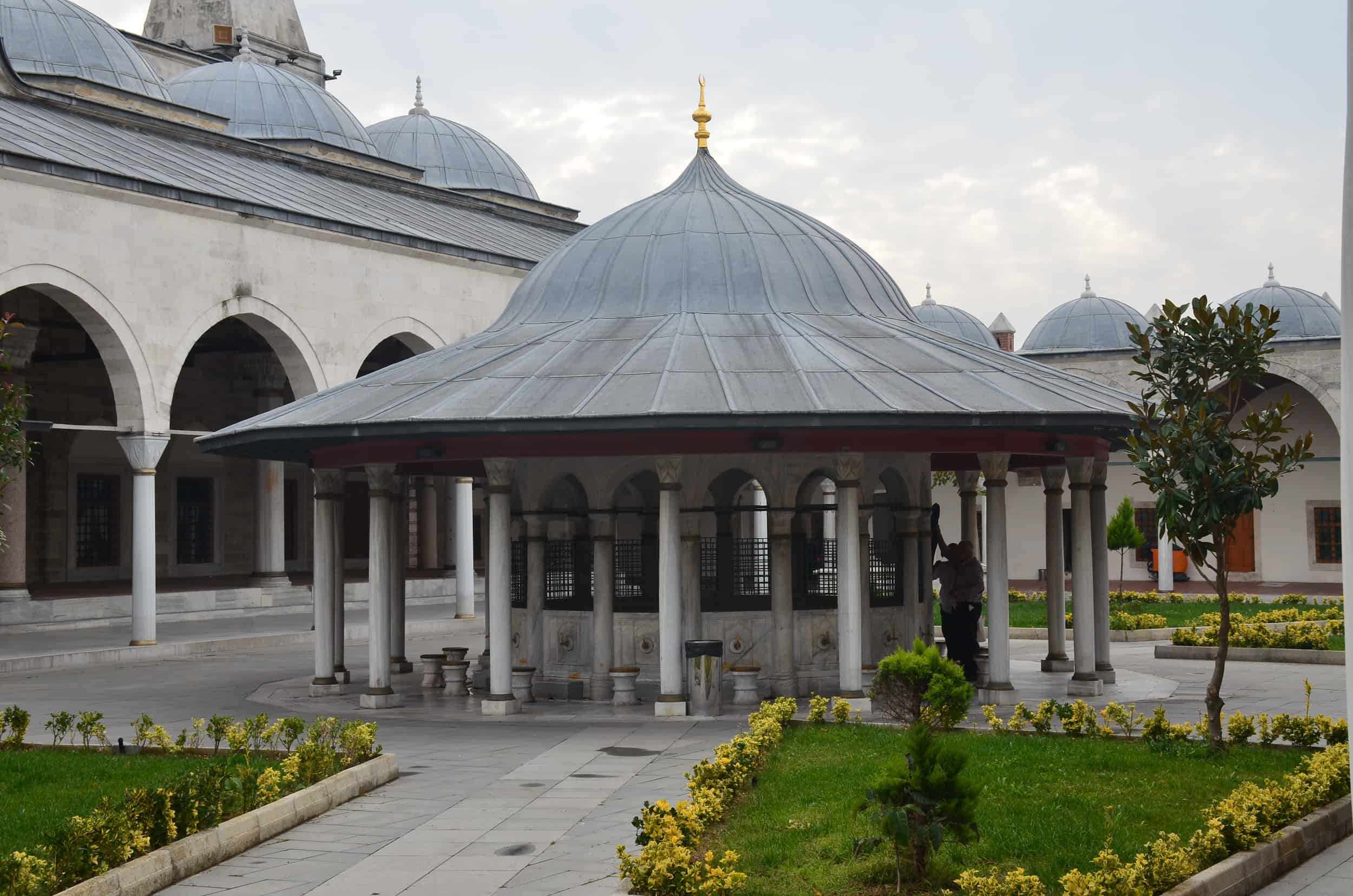
The prayer hall of the Mihrimah Sultan Mosque is brightly lit by a total of 204 windows. In fact, it’s one of the most well-lit mosques ever designed by Mimar Sinan. Some of the windows contain stained glass.
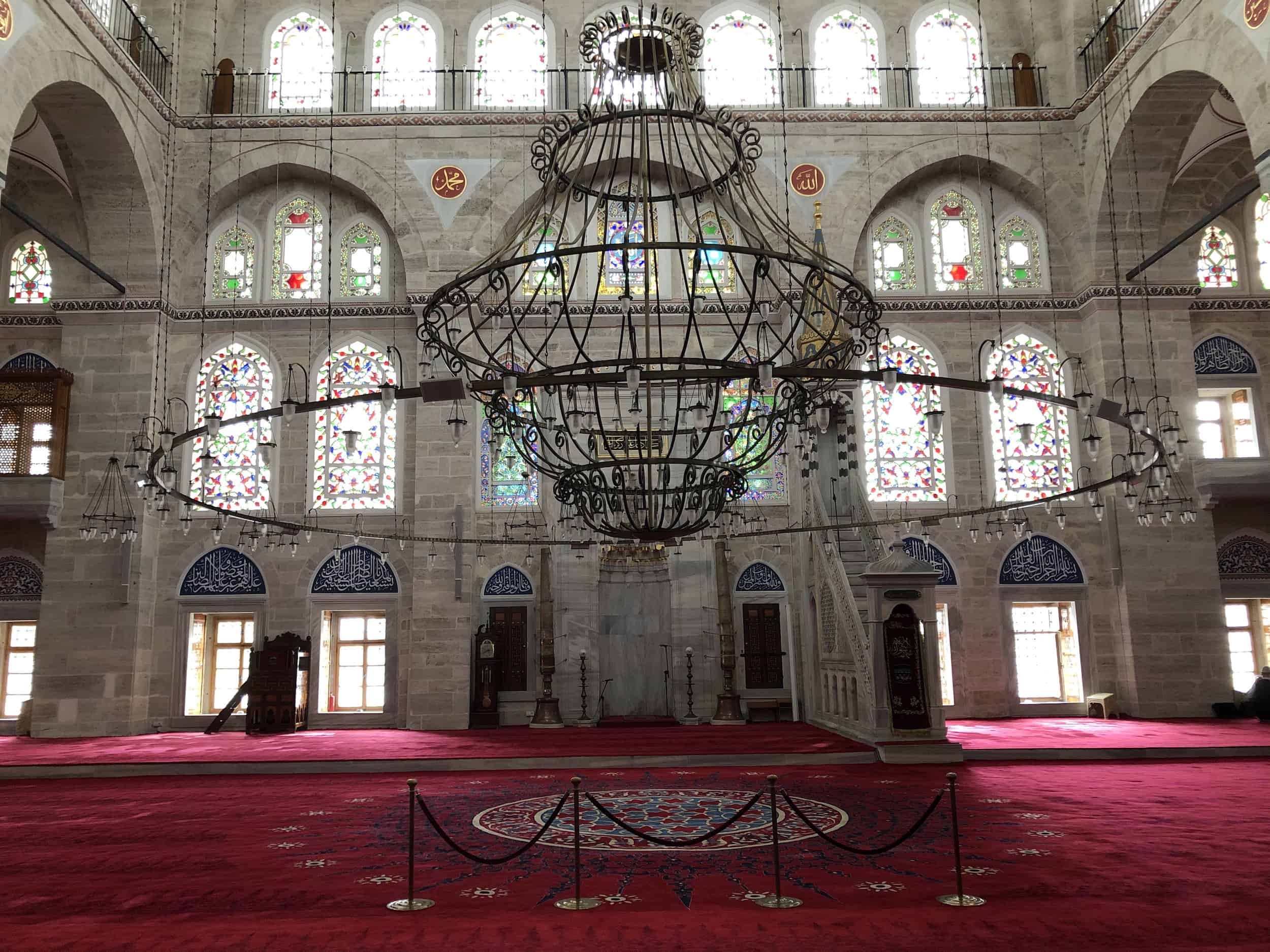
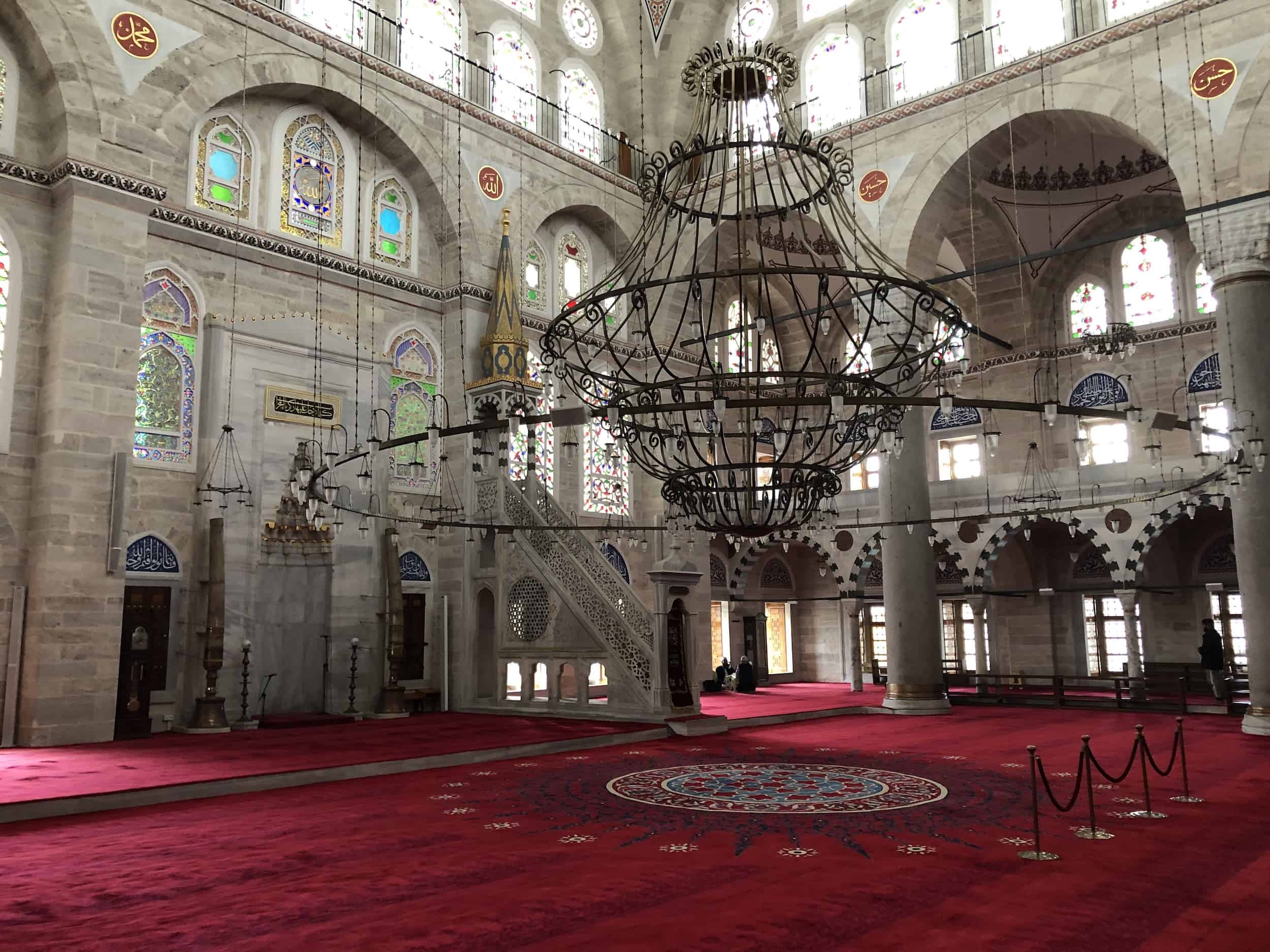
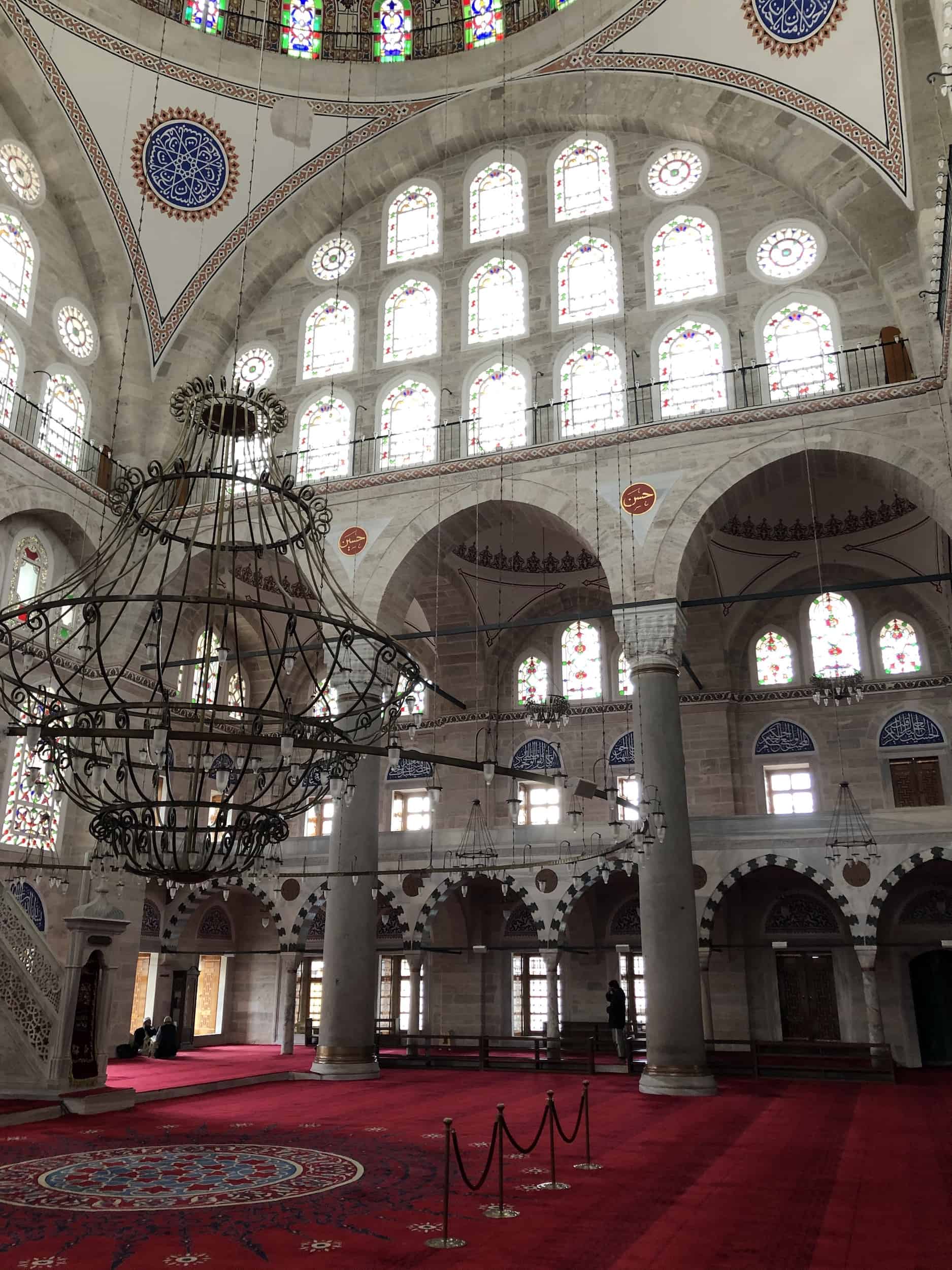
The dome is 20 meters (66 feet) in diameter and 37 meters (121 feet) high. All of the interior decorations are modern, but the minbar is from the original construction. It was carved of white marble.
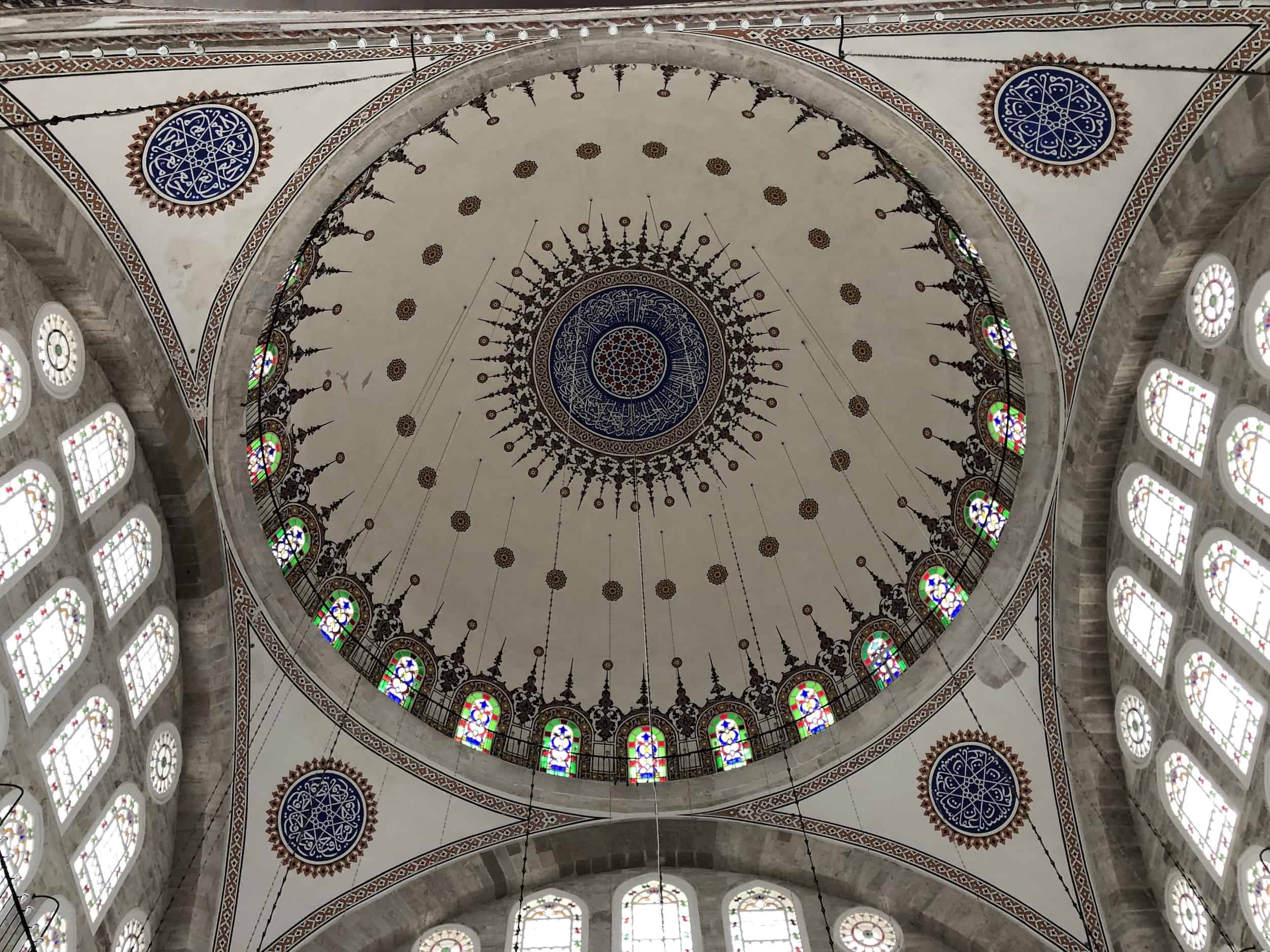
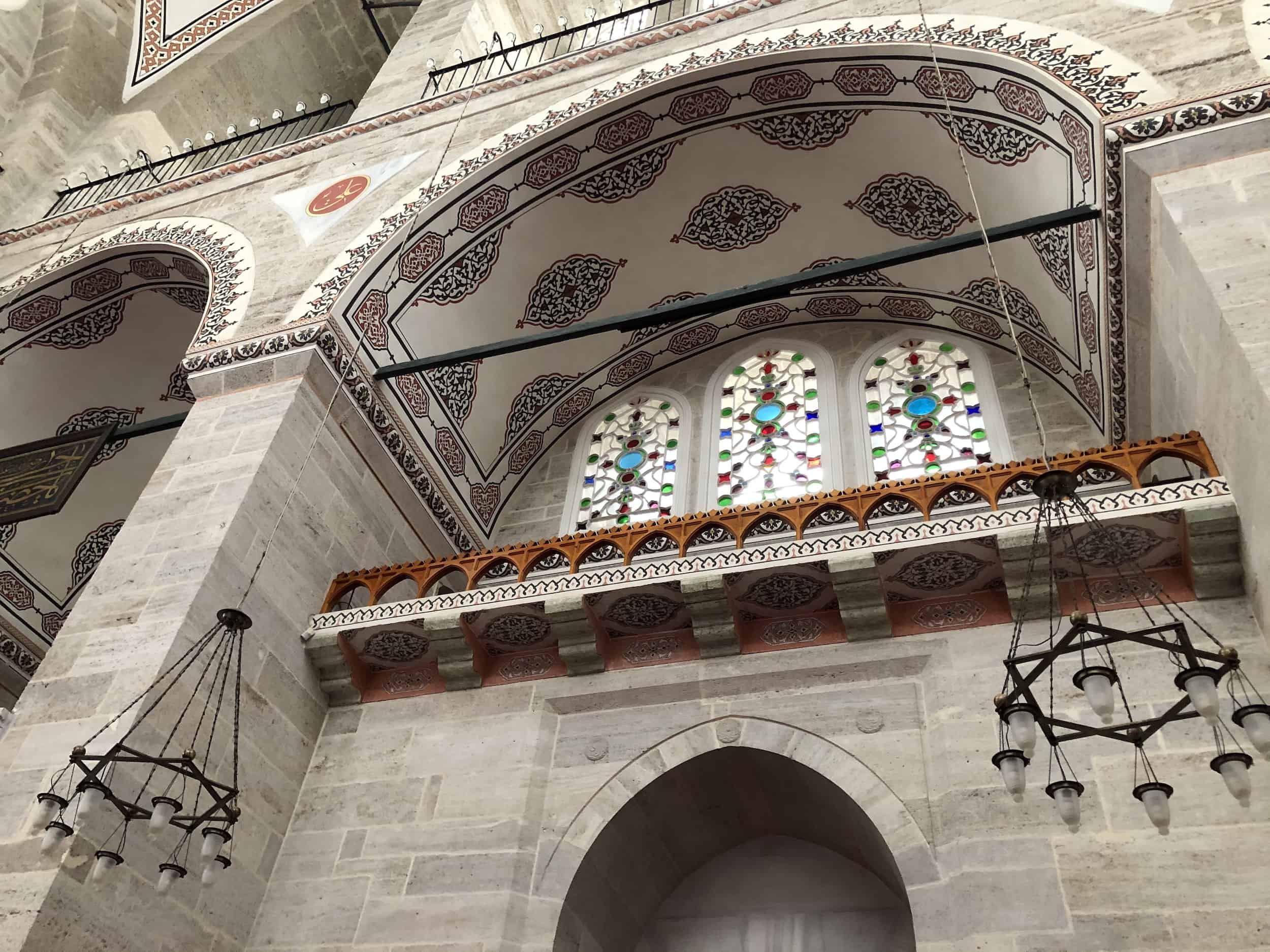
Church of St. George
Just inside the Gate of Charisius is the Church of St. George (Ἅγιος Γεώργιος Ἐδιρνέκαπου). It sits on the site of an earlier Byzantine church commissioned by Emperor Constantine V in the late 8th century. That church was demolished in 1555 to make way for the Mihrimah Sultan Mosque.
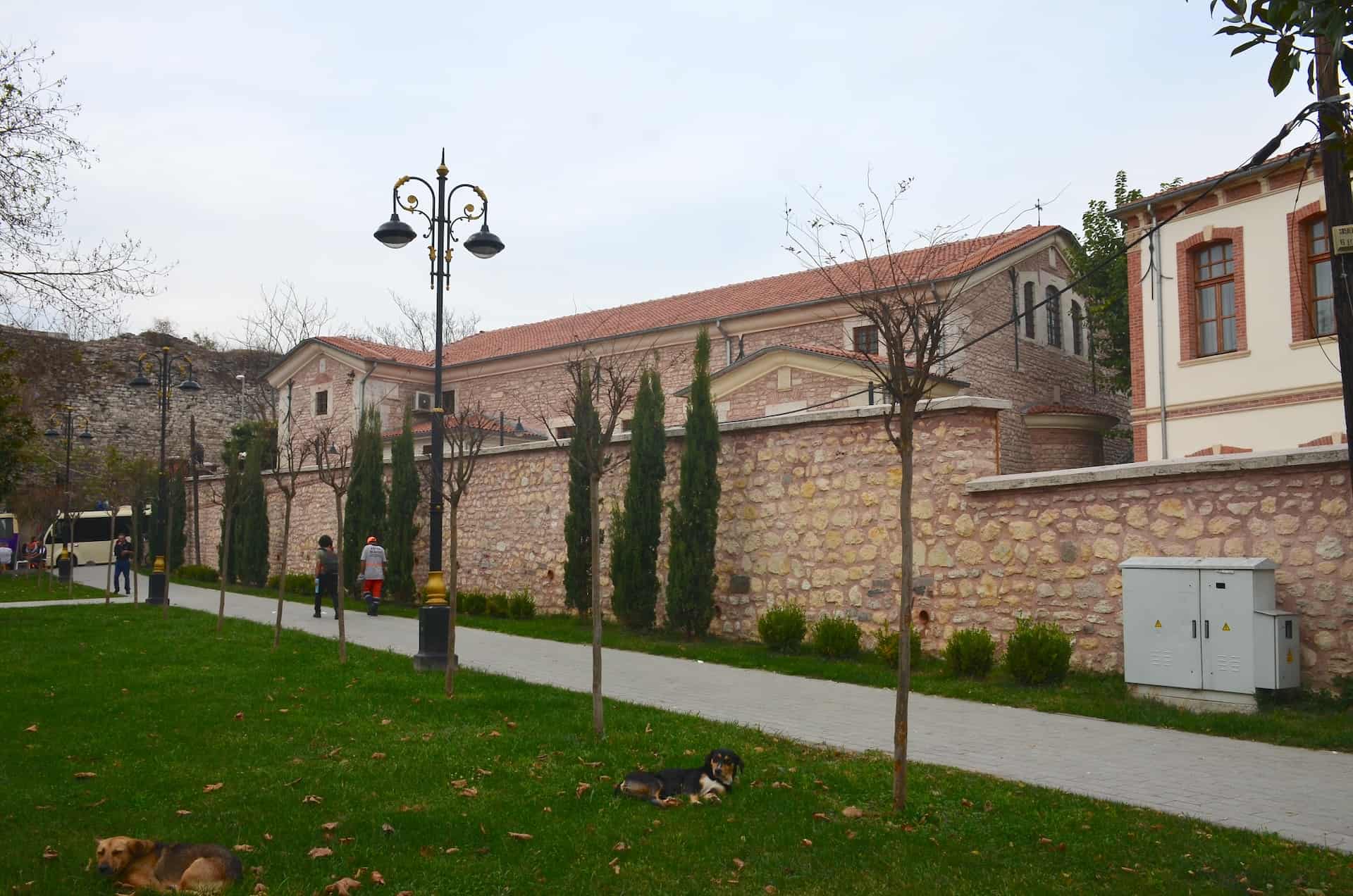
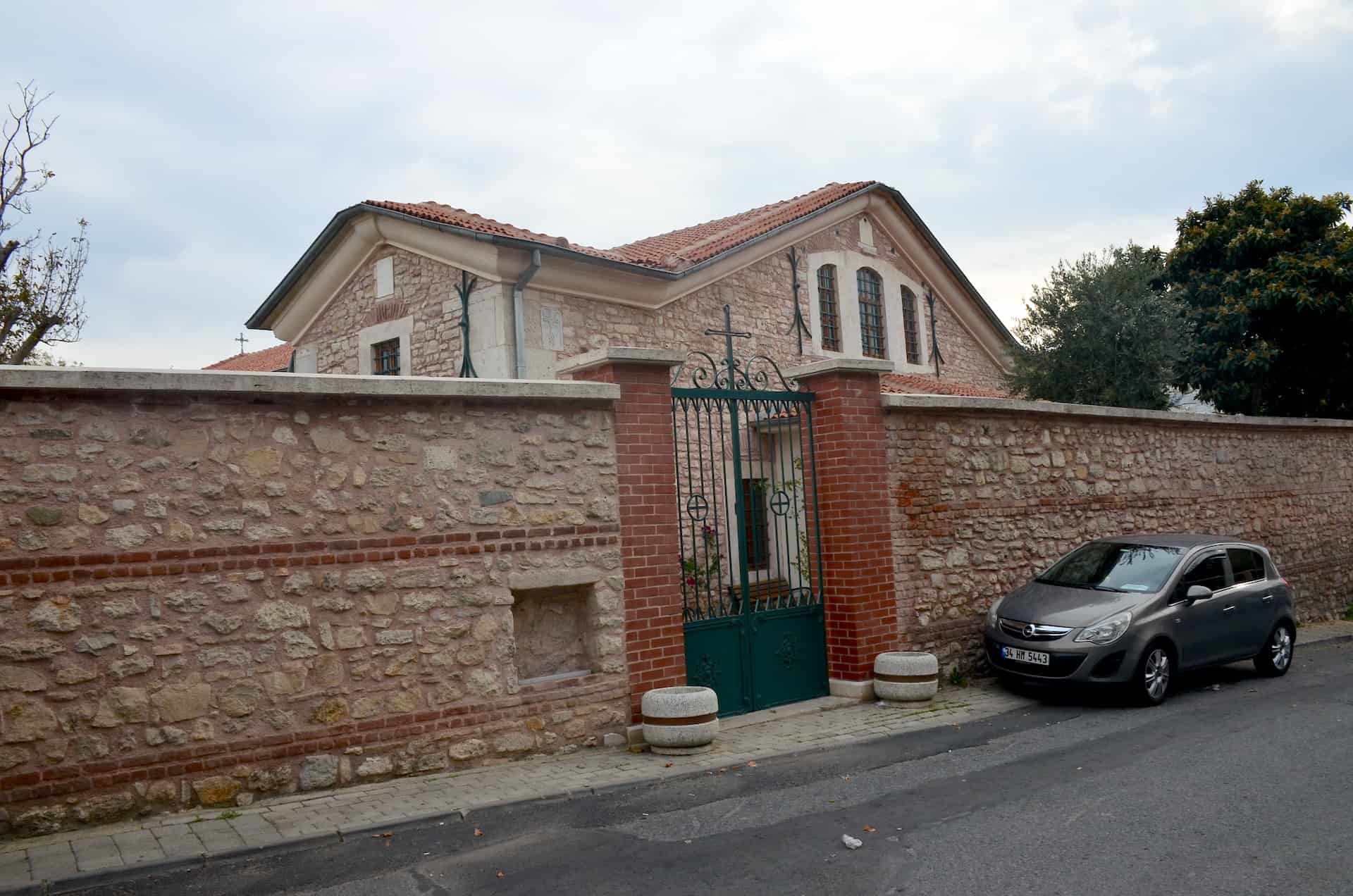
Süleyman the Magnificent gave permission to the Greek Orthodox community to build another church, which was completed in 1567. It was later repaired in 1726, and collapsed and rebuilt in 1836. The current Church of St. George was restored between 2014 and 2017.
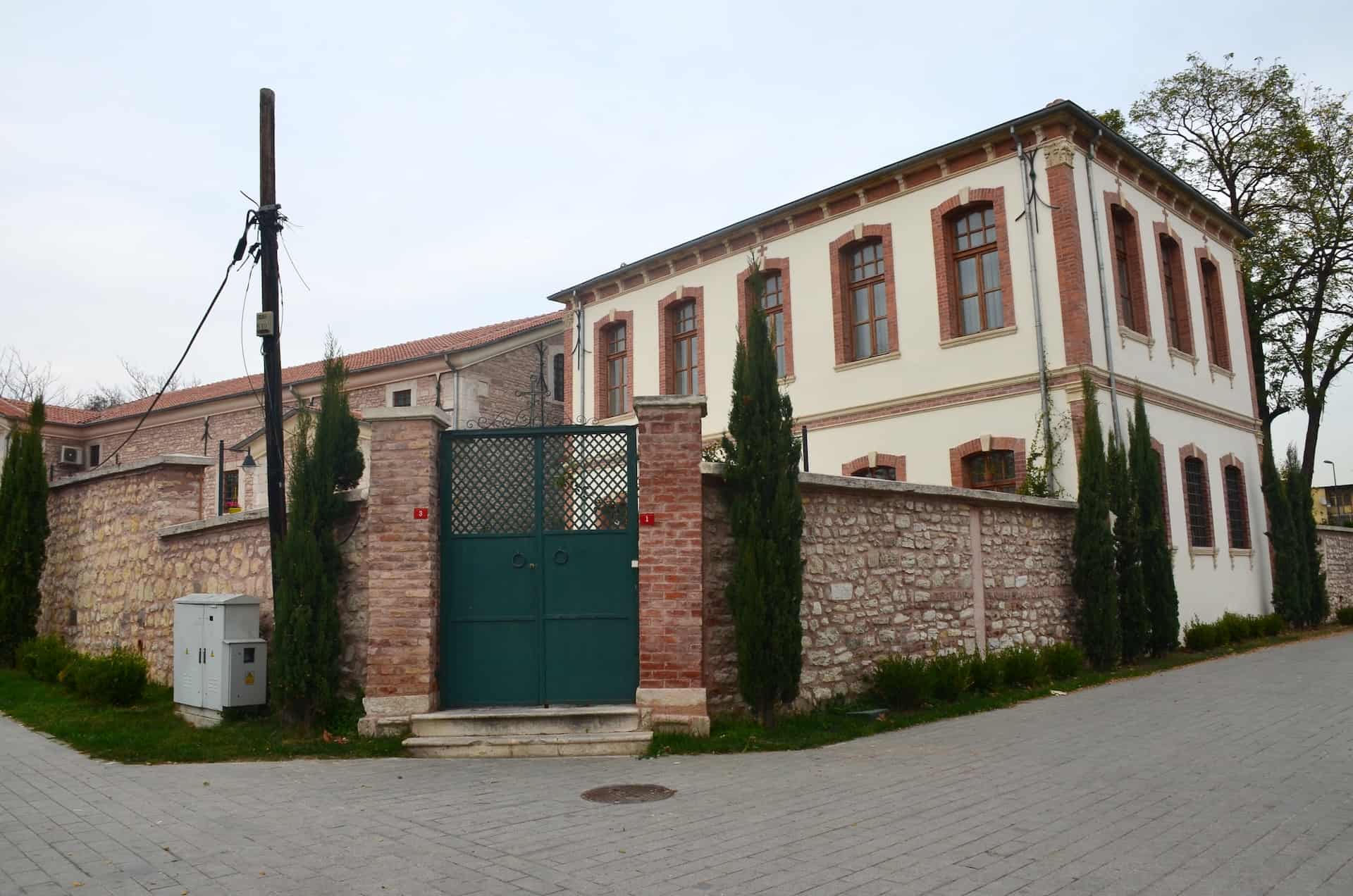
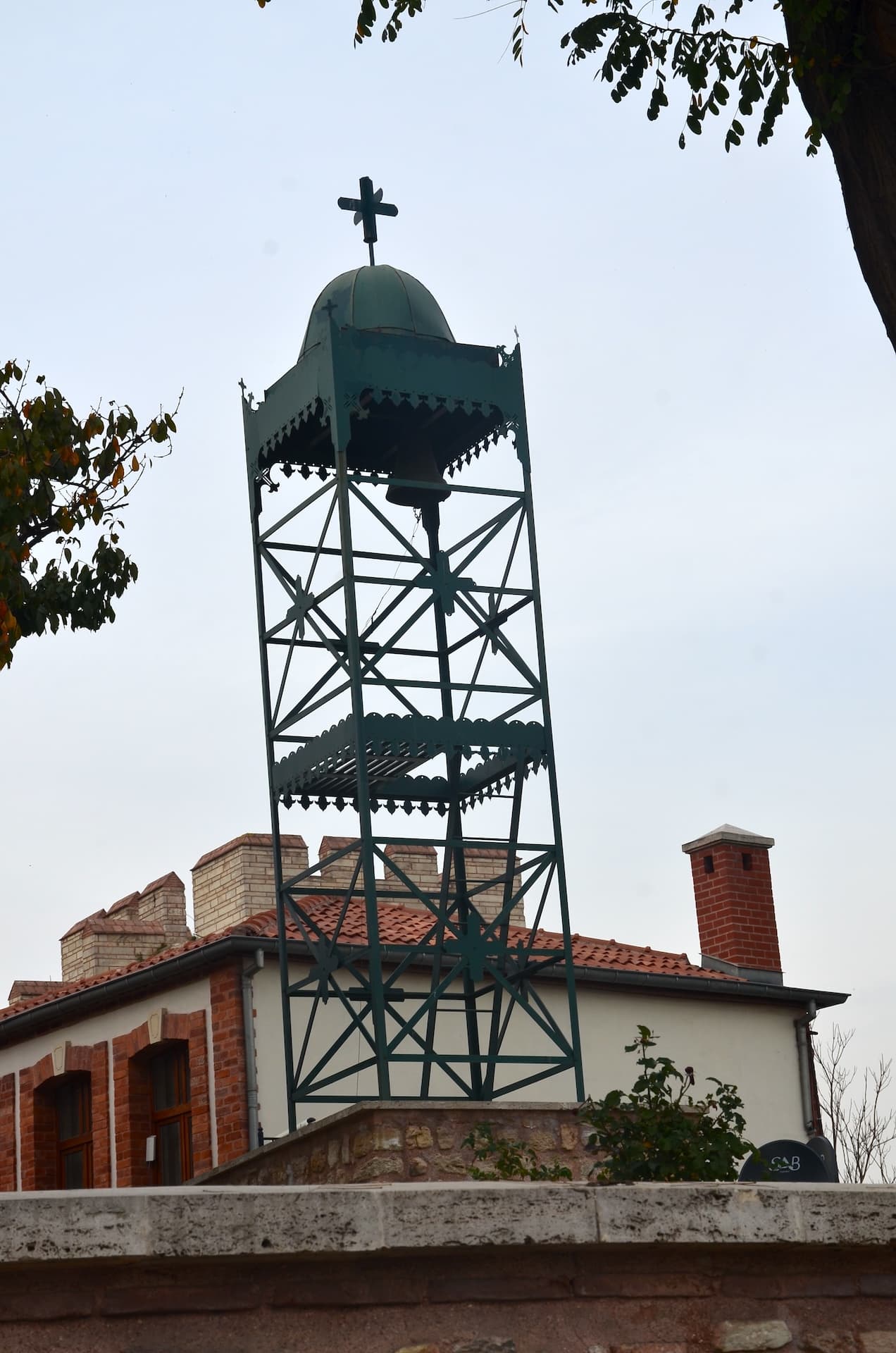
Salma Tomruk Avenue
Salma Tomruk Avenue is downhill from the Chora Church. It has a few remnants of the Jewish and Greek heritage of the neighborhood.
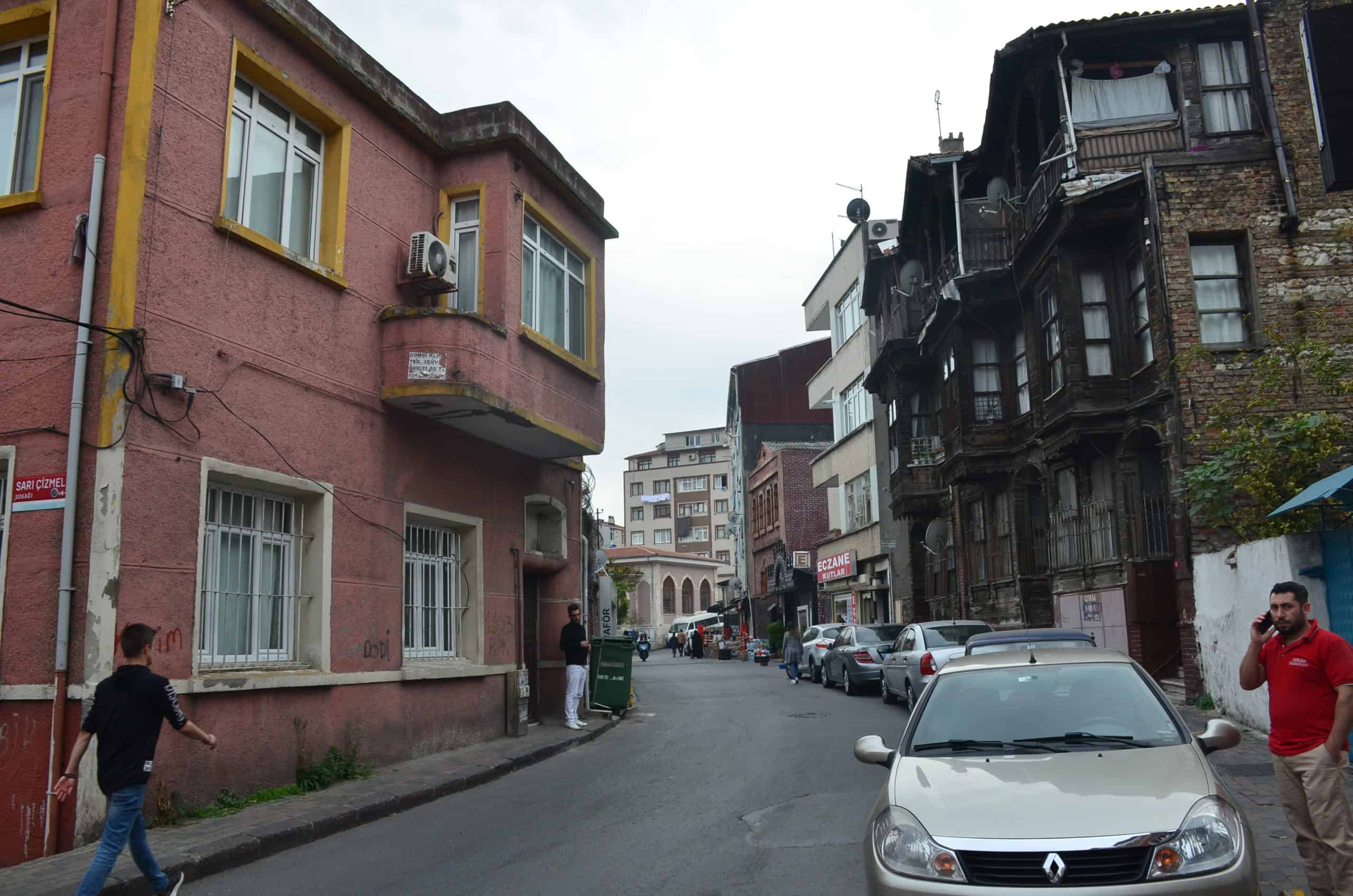
Istipol Synagogue
The Istipol Synagogue (İstipol Sinagogu) was built in 1694 by Sephardic Jews from Štip, North Macedonia, who originally left Spain during the Spanish Inquisition. The synagogue burned down in 1896 and was rebuilt in 1898.
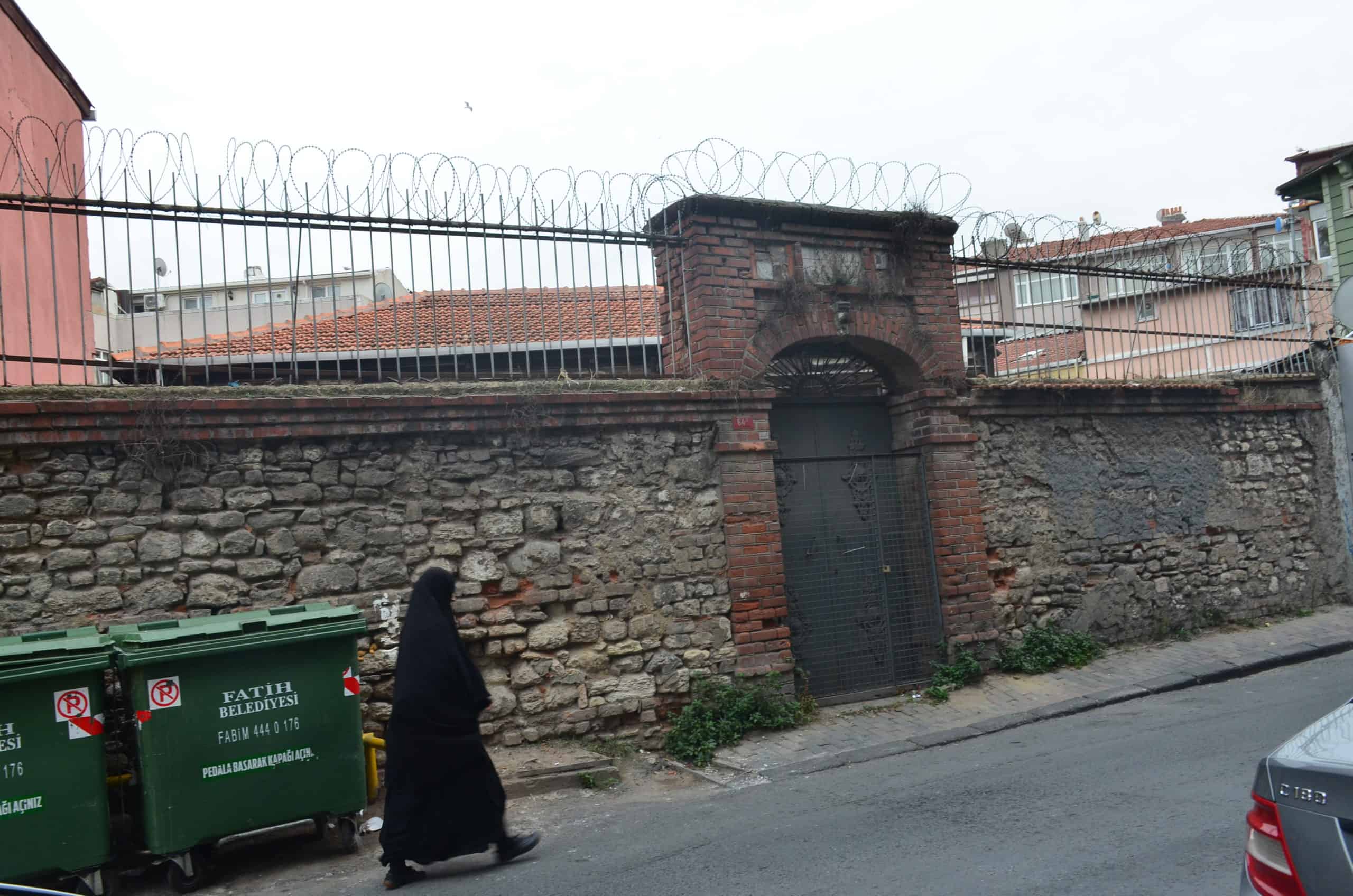
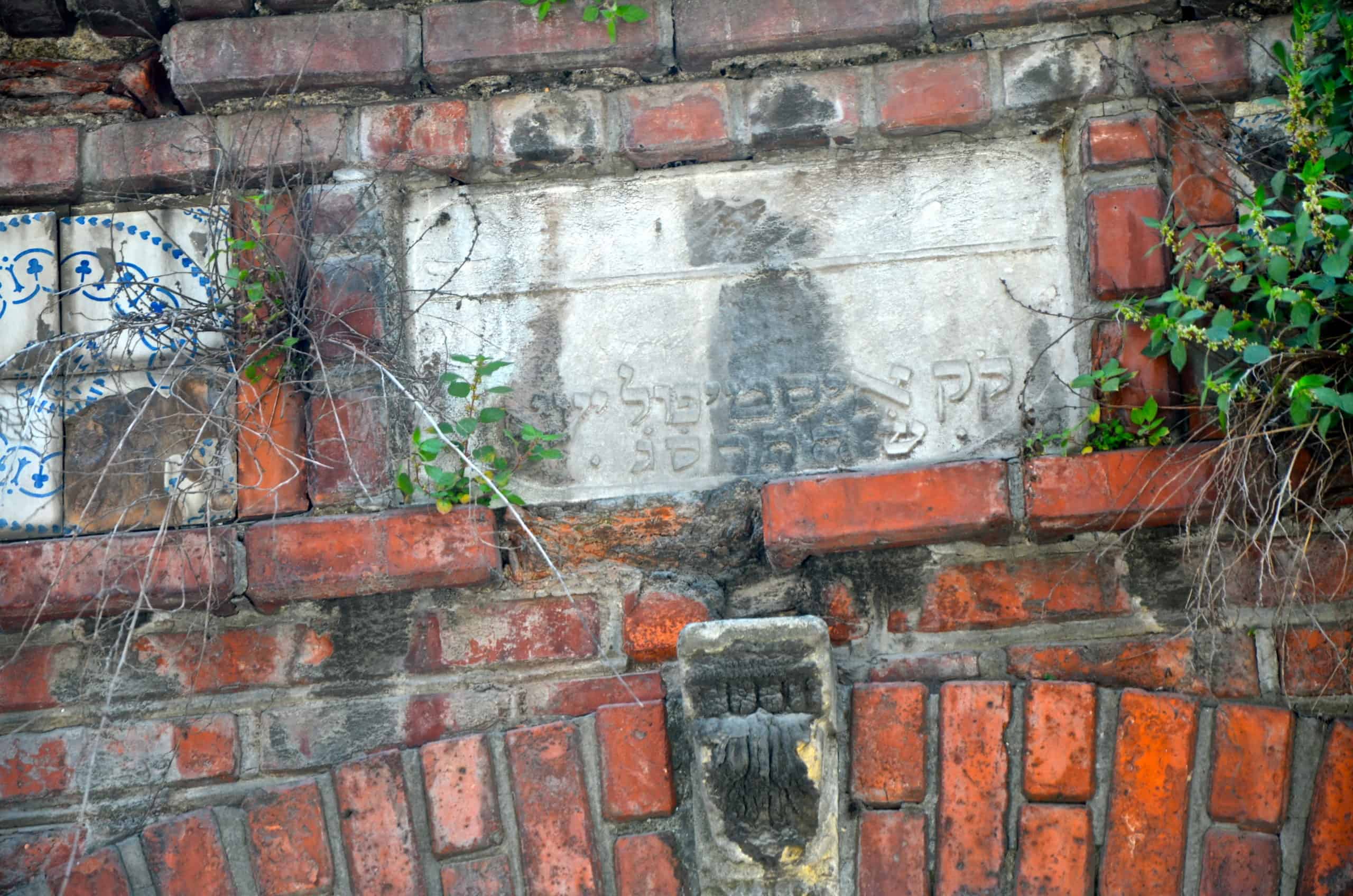
The Istipol Synagogue is one of the few remaining wooden synagogues in Turkey, although it’s in a dilapidated state and partially collapsed. There’s no congregation left, but a prayer took place there in January 2016 with no electricity. Across the street is a beautiful wooden structure where local Jews once lived.
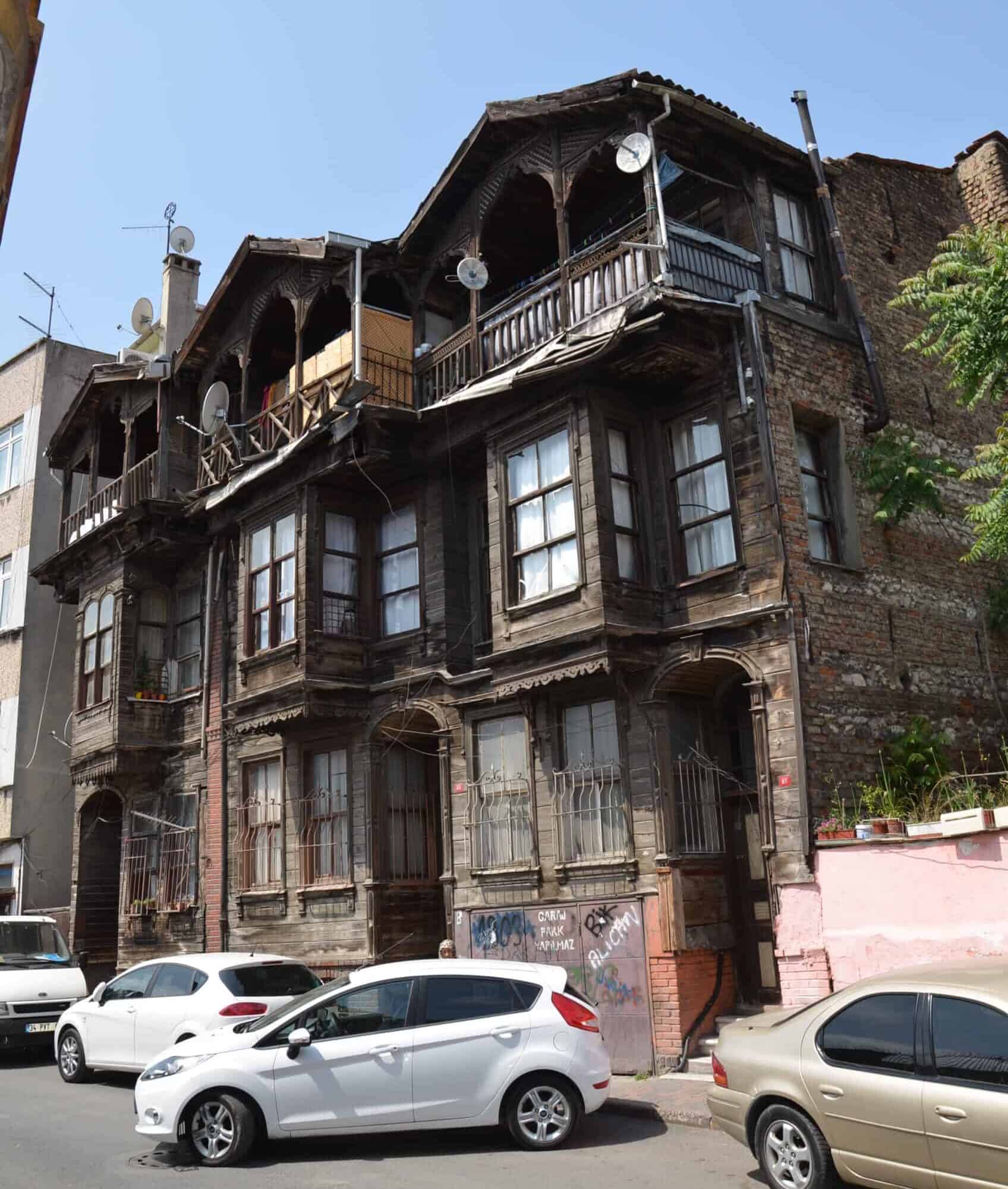
Panagia of the Heavens Greek Orthodox Church
A couple blocks up Salma Tomruk Avenue towards Fevzi Pasha Avenue is the Panagia of the Heavens Greek Orthodox Church (Παναγία τῶν Οὐρανῶν Σαλματοβρουκίου / Panayia Uranon Rum Kilisesi). The original church was owned by a noble Armenian family and dates back to at least 1583. It was rebuilt in 1730 with permission of the Sultan.
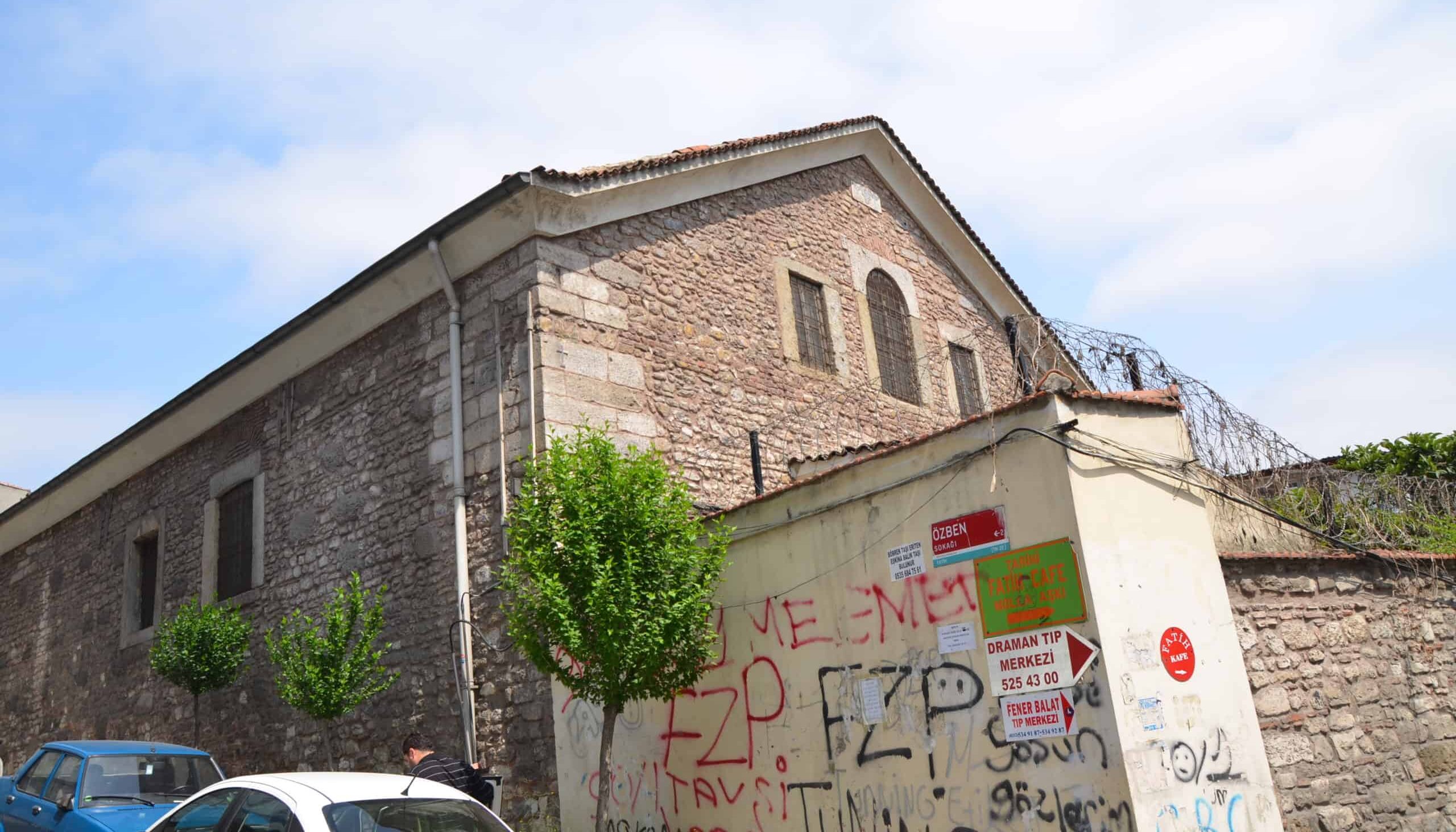
The current church was built in 1834 and the bell tower was built in 1940. There are no parishioners other than the family that serves as caretakers. The building is in disrepair.
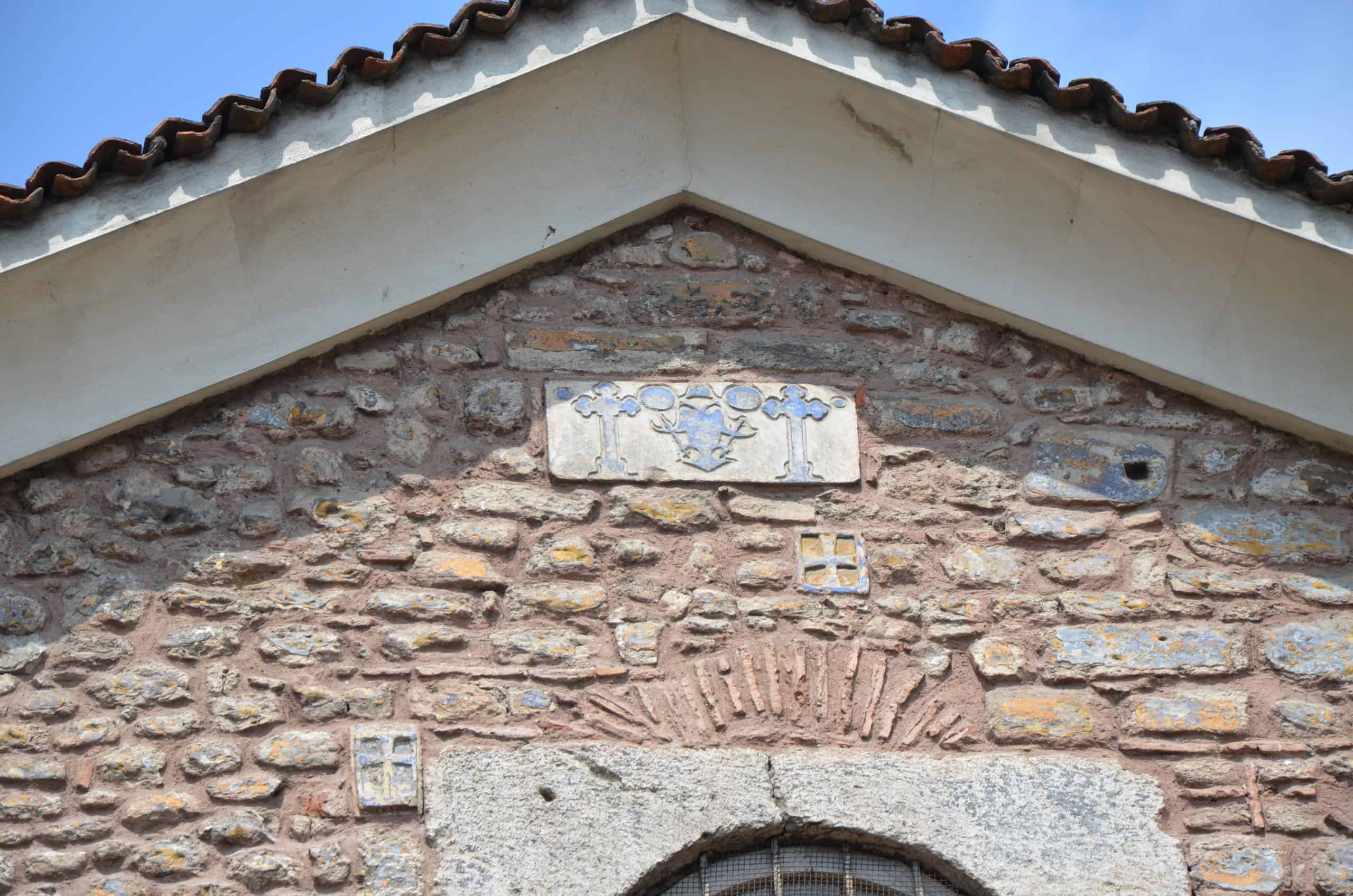
Where to Eat in Edirnekapı
Unfortunately, Asitane, the best restaurant in the entire neighborhood and one of the best in Istanbul, has closed down. I have every reason to believe it’s related to the conversion of the Chora Church (Kariye Museum) to a mosque. As the website is still active, I’ll stay posted in case it reopens in a different location.
Asitane (Permanently Closed)
Asitane is a restaurant next to the Chora Church. They’ve specialized in historic recipes from the Ottoman palace kitchens since opening in 1991. It’s well worth combining a visit to this restaurant with the Chora Church.
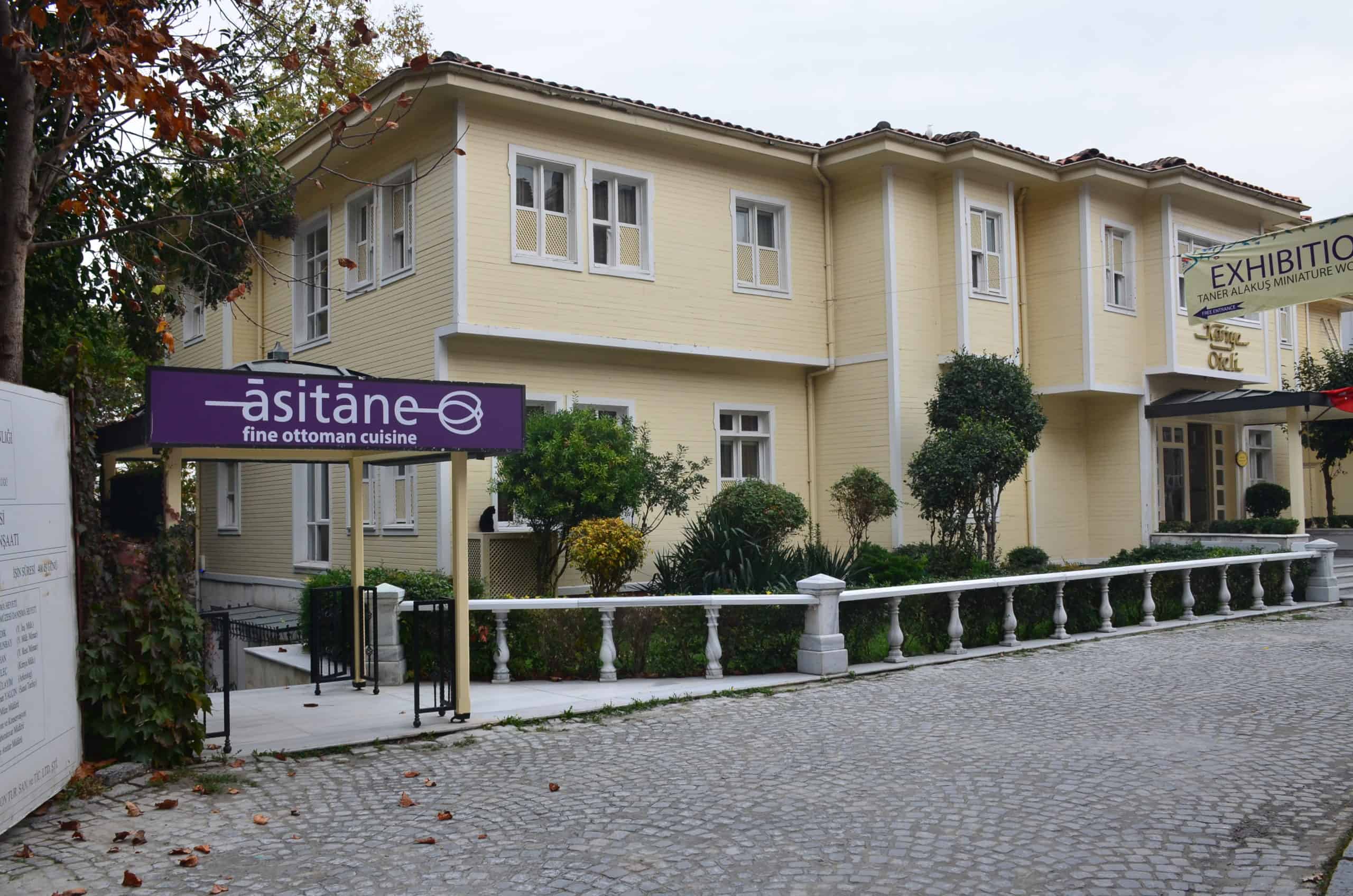
The extensive menu changes every season. I’ve visited several times and have had the summer and winter menus. There’s an indoor dining room as well as an outdoor garden which is nice in good weather.
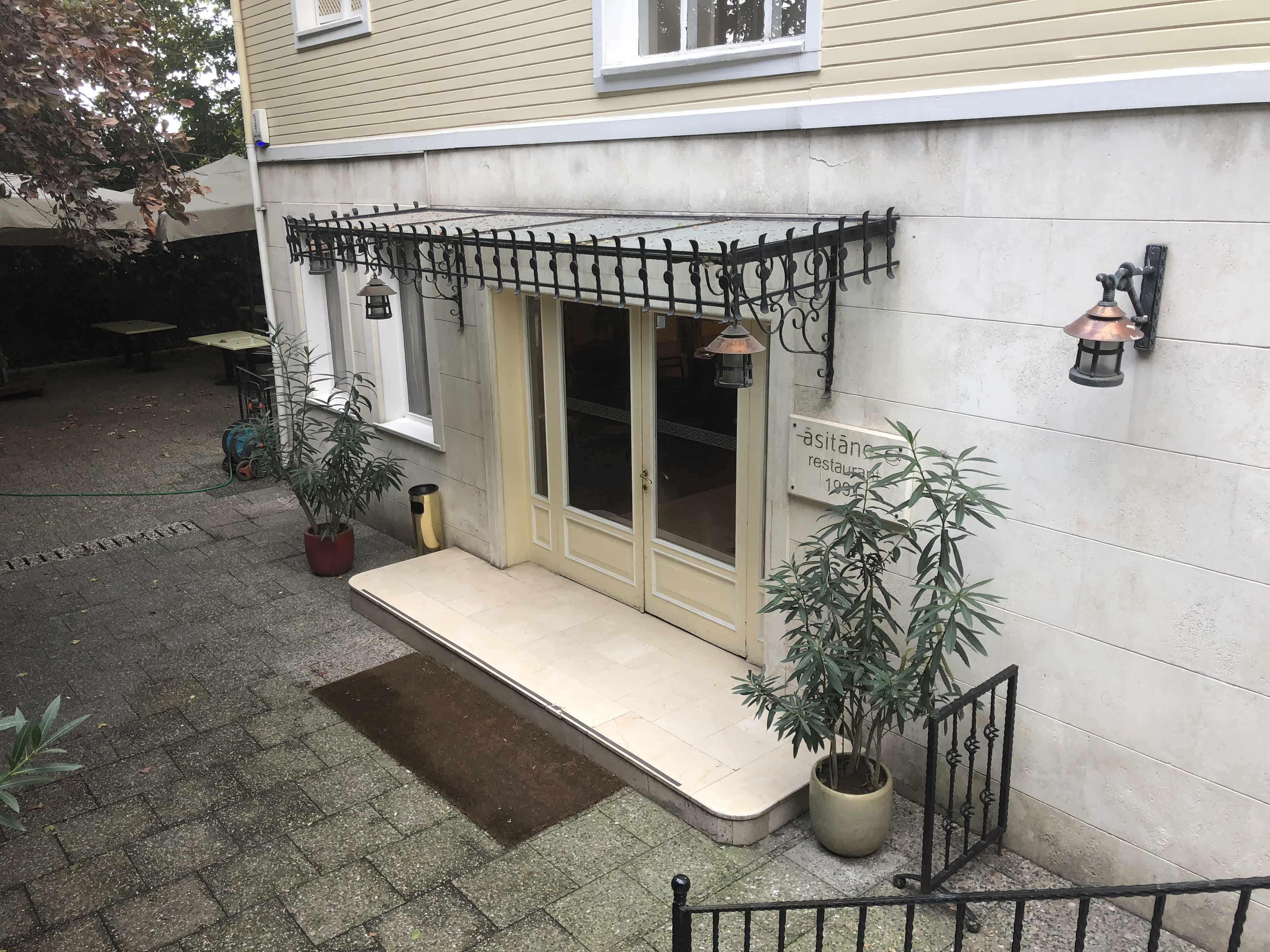
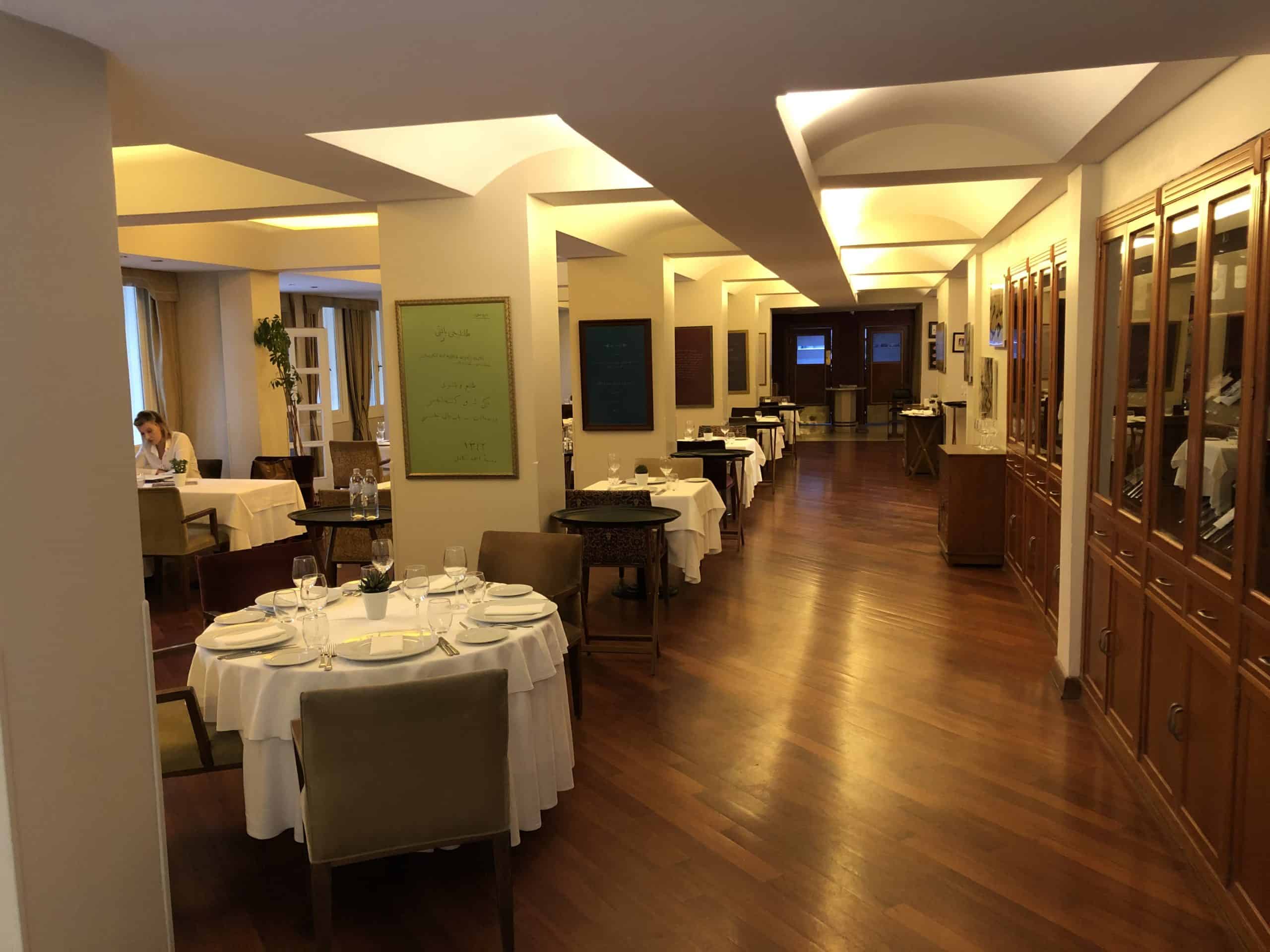
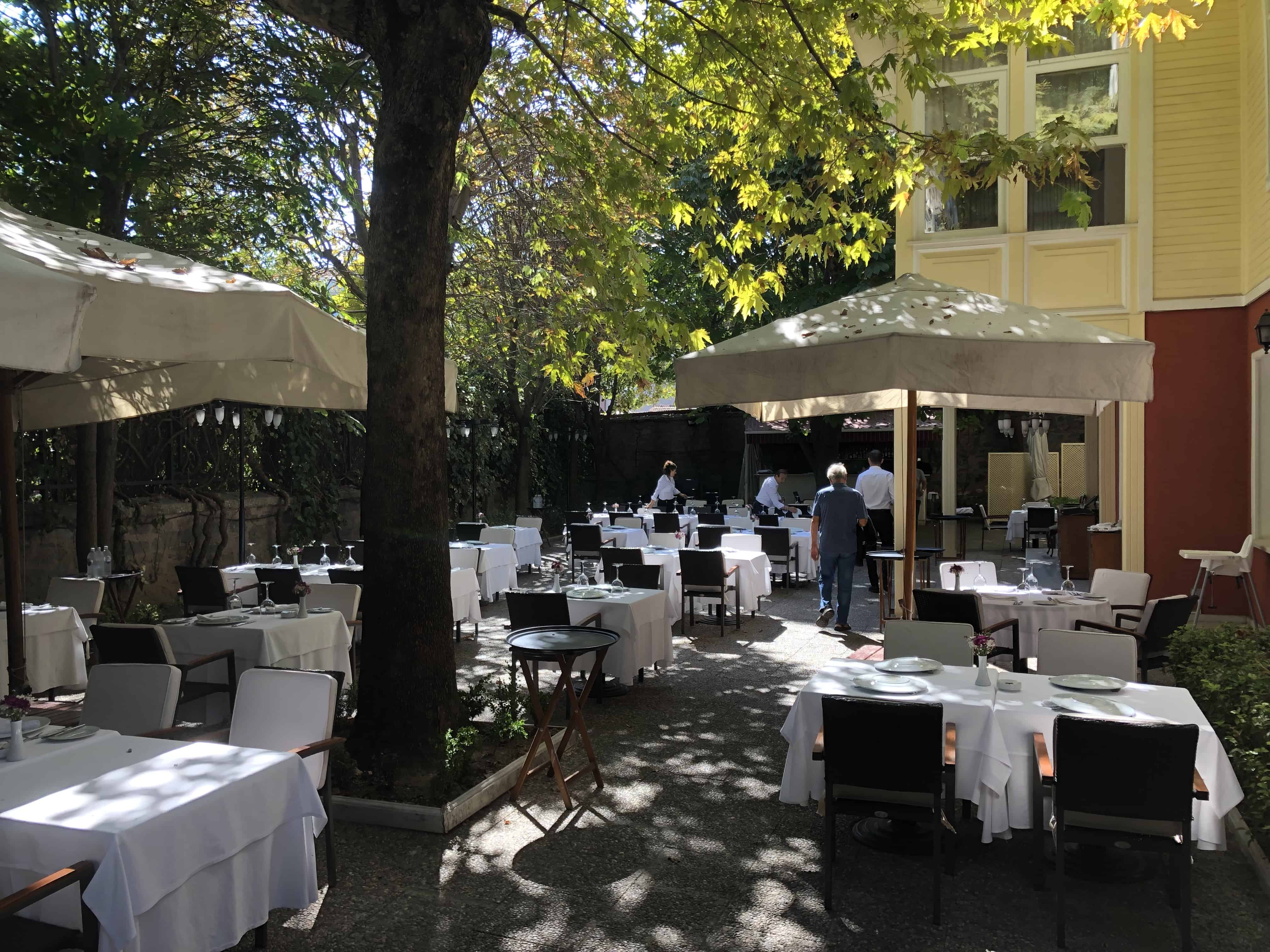
Dishes at Asitane
My first visit was with a group of eight. We sat inside and all ordered off the menu. We shared several different meze dishes including imam bayıldı, stuffed calamari, stuffed zucchini, grape leaves stuffed with sour cherry, and lightly battered zucchini sticks. For my main course, I had a lamb and yogurt dish. Everything was delicious. My apologies for the quality of the photos from this visit.
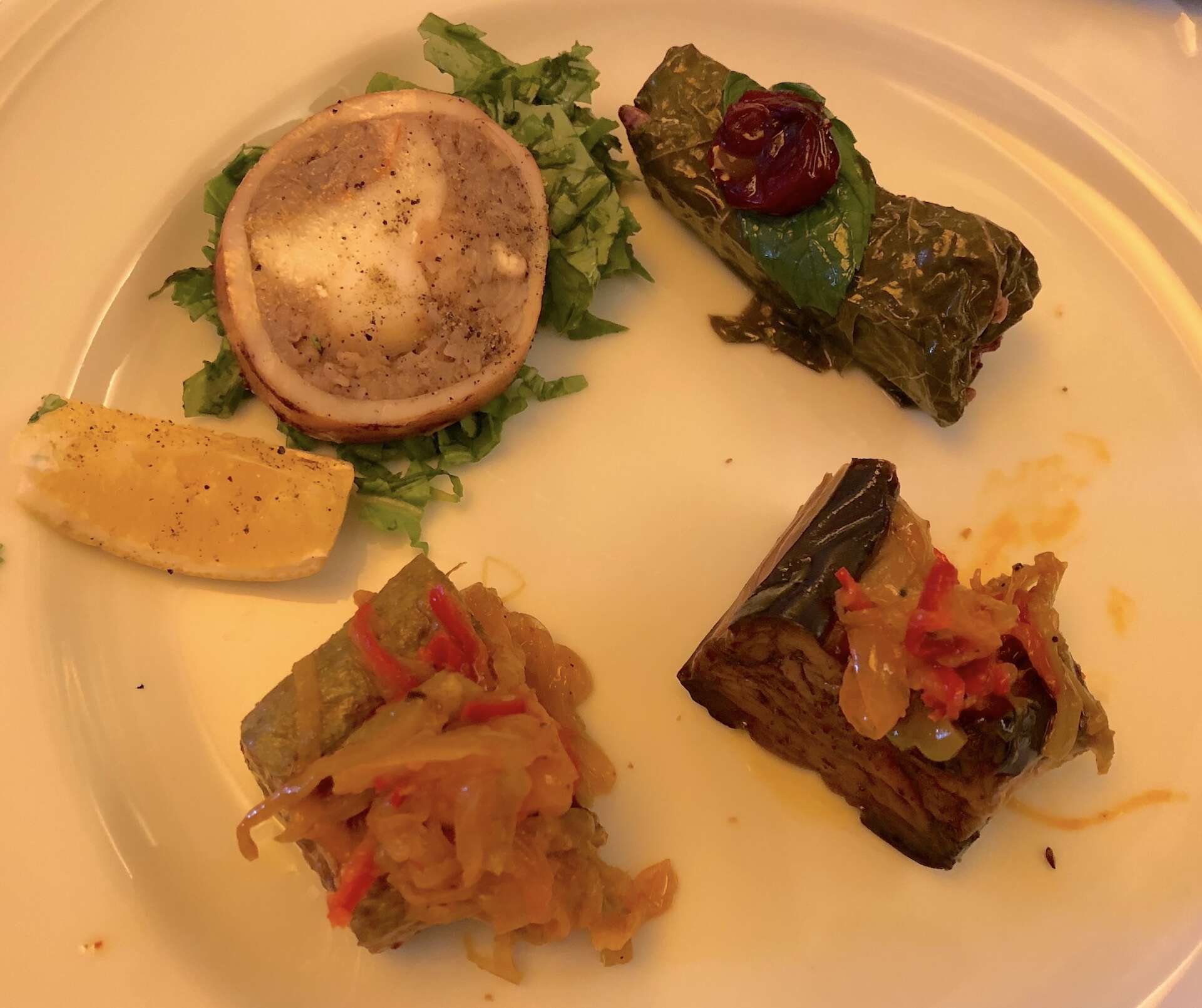
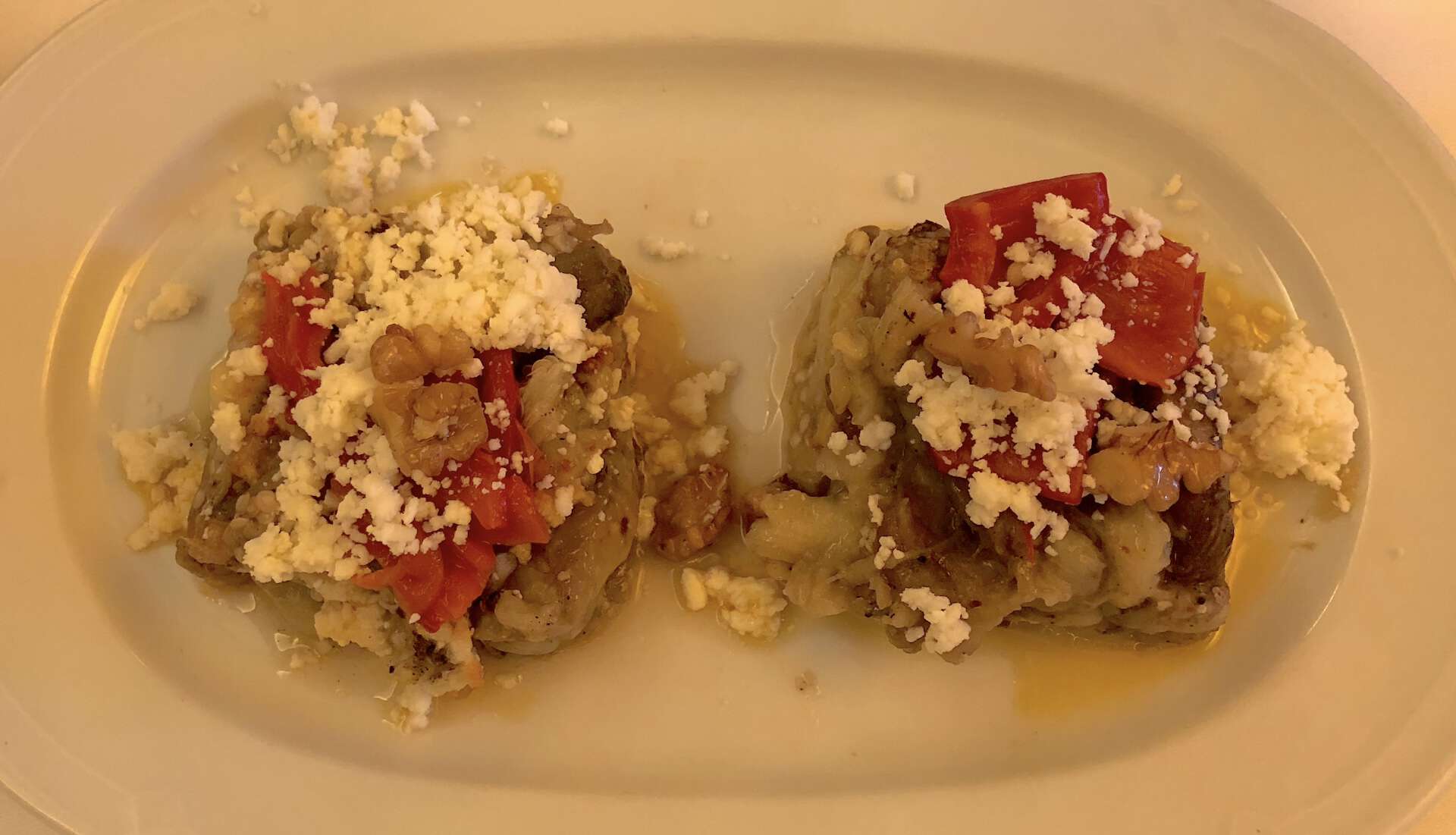
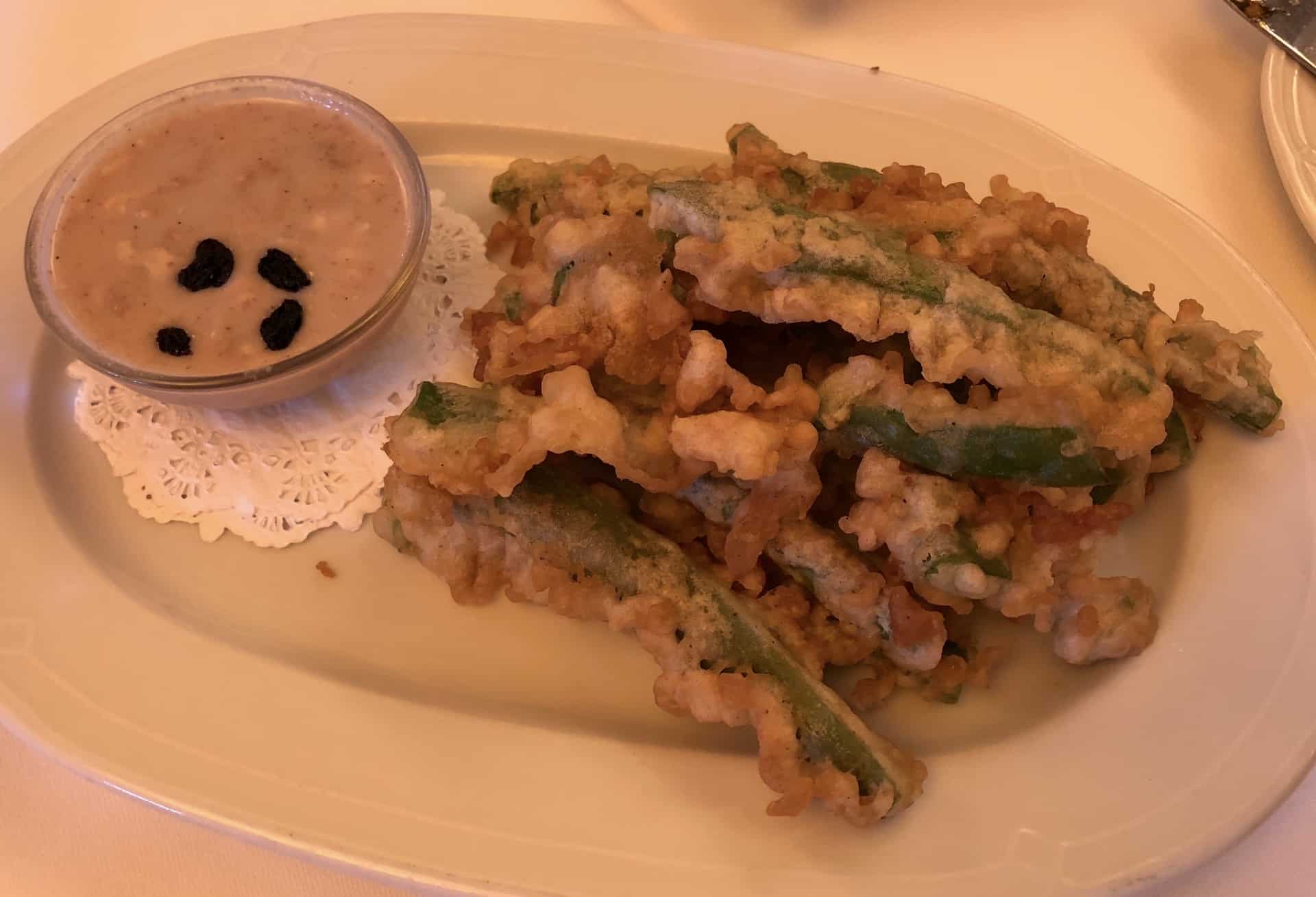
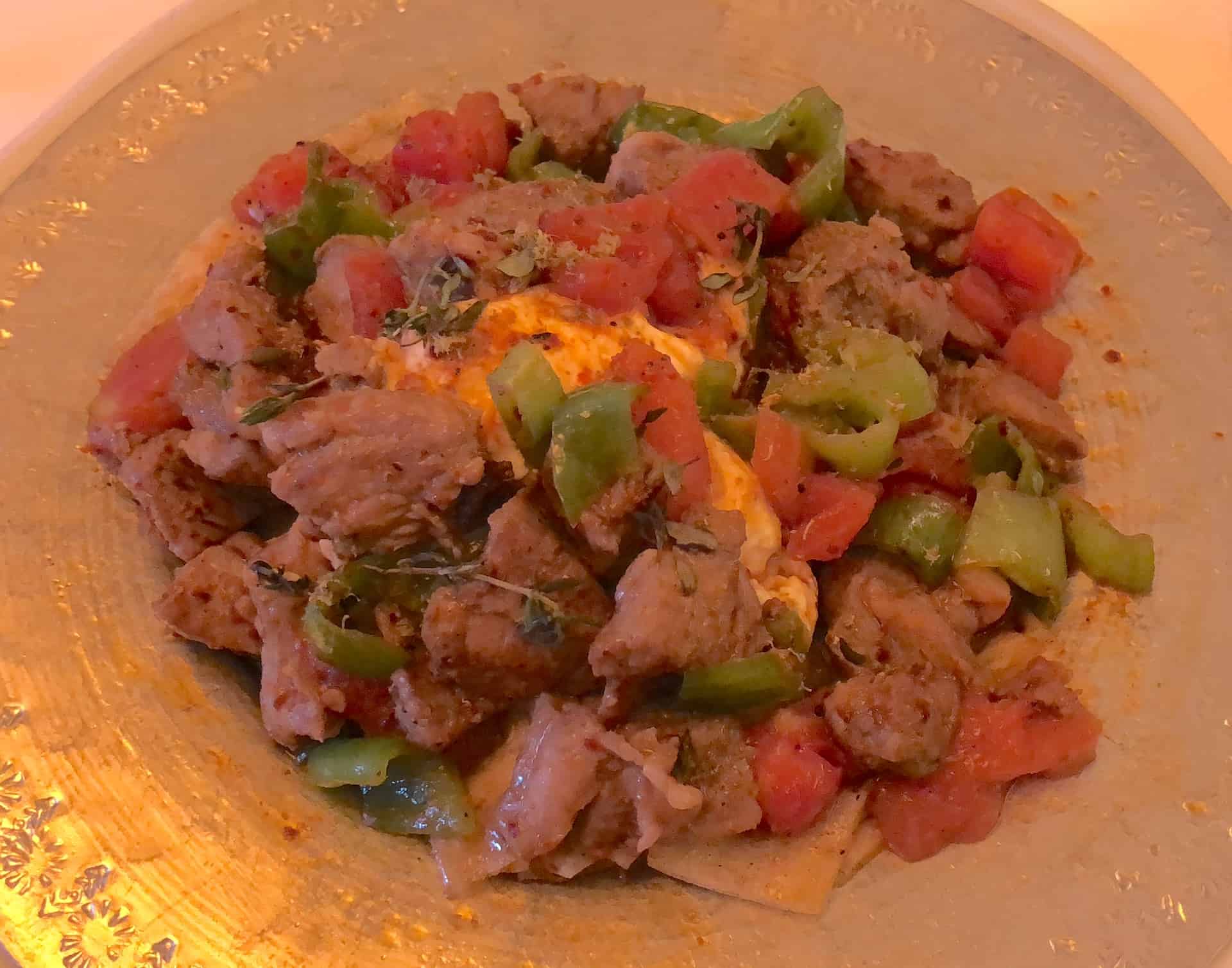
For dessert, we shared bread pudding with sour cherries along with peach ka’a (photo below), which is a walnut pastry with peach slices. Both desserts were topped with ice cream.
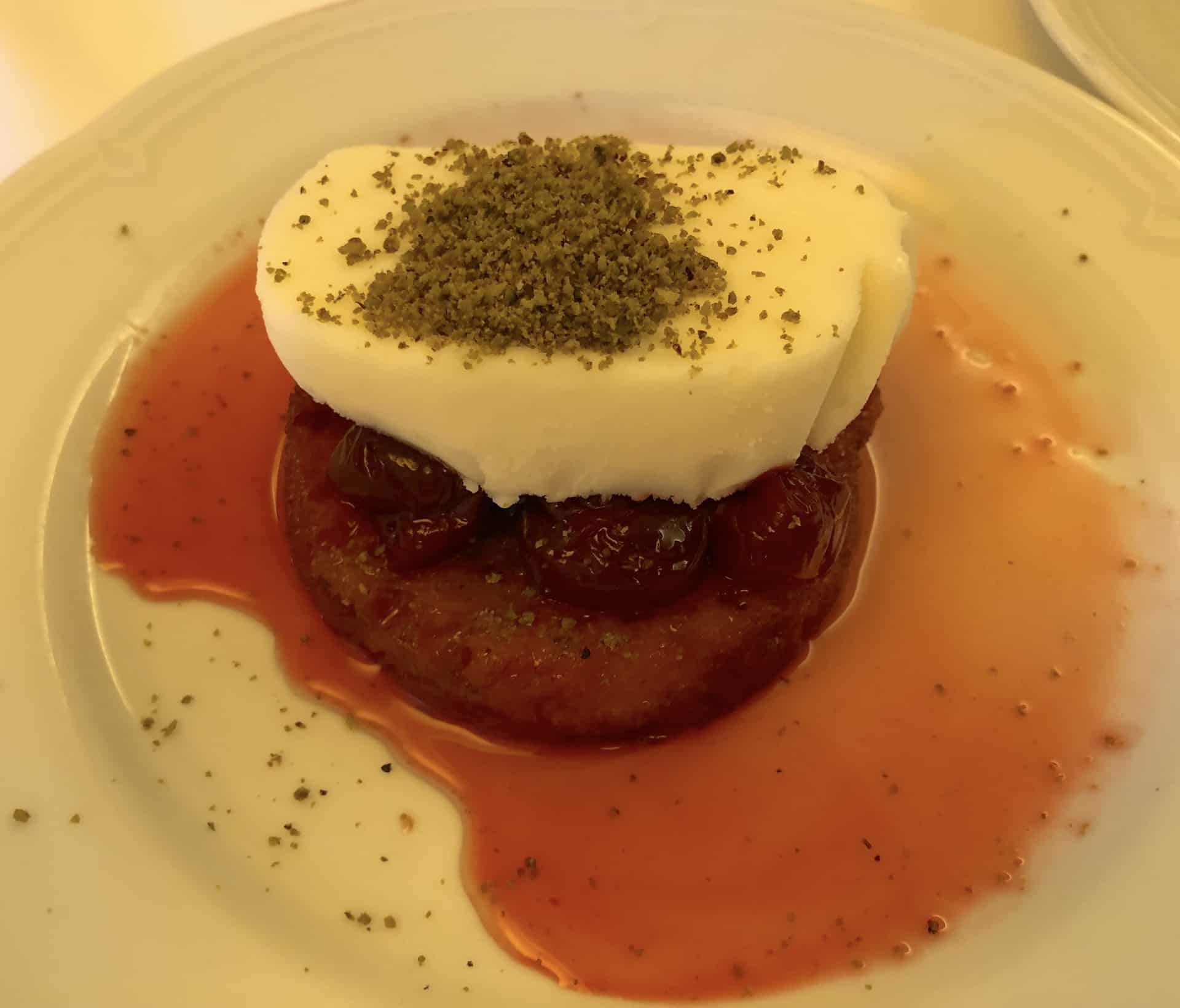
On my second visit, we took a tour group of 23 people and sat outside in the garden. We had a fixed menu starting with hassa böreği, which is a pastry stuffed with tulum cheese, green olives, walnuts, yogurt, spring onions, and tarragon. We also had imam bayıldı, babaganoush, and cucumber pounded with onion and pistachio.
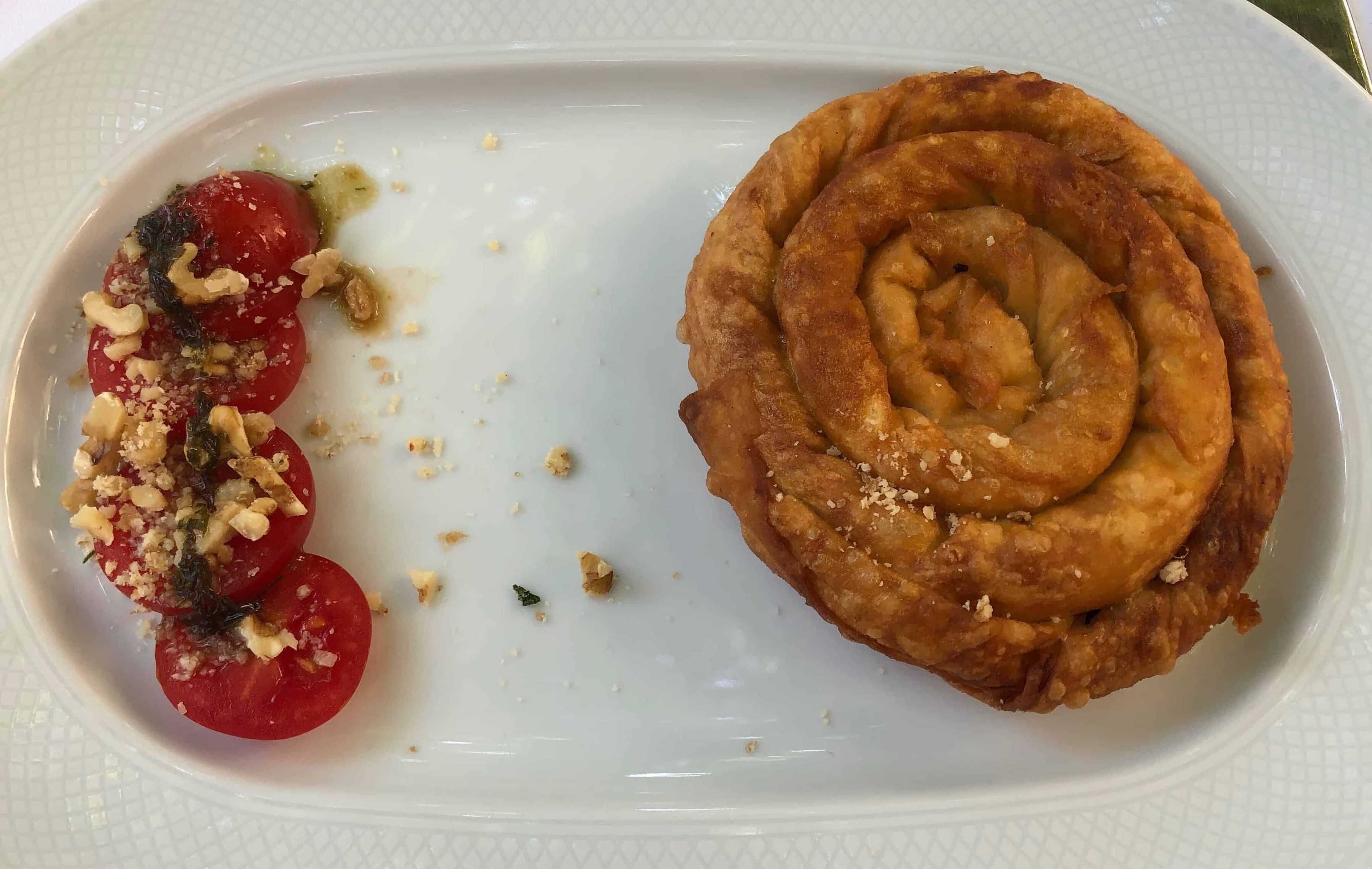
The main course was a chicken filet marinated with cinnamon and bay leaves and served on a bed of vinegar sautéed onions. Dessert was saffron milk pudding with ice cream.
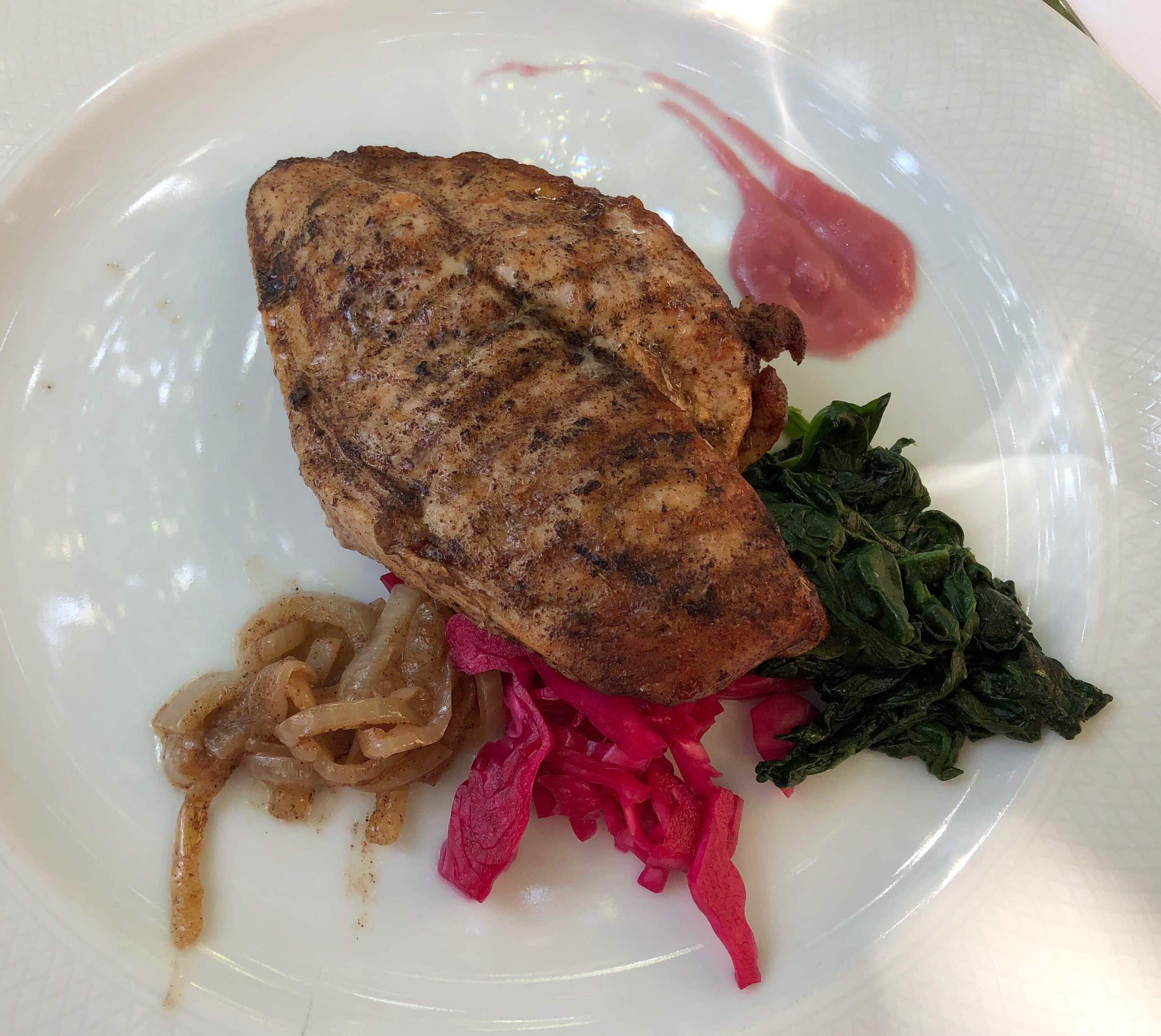
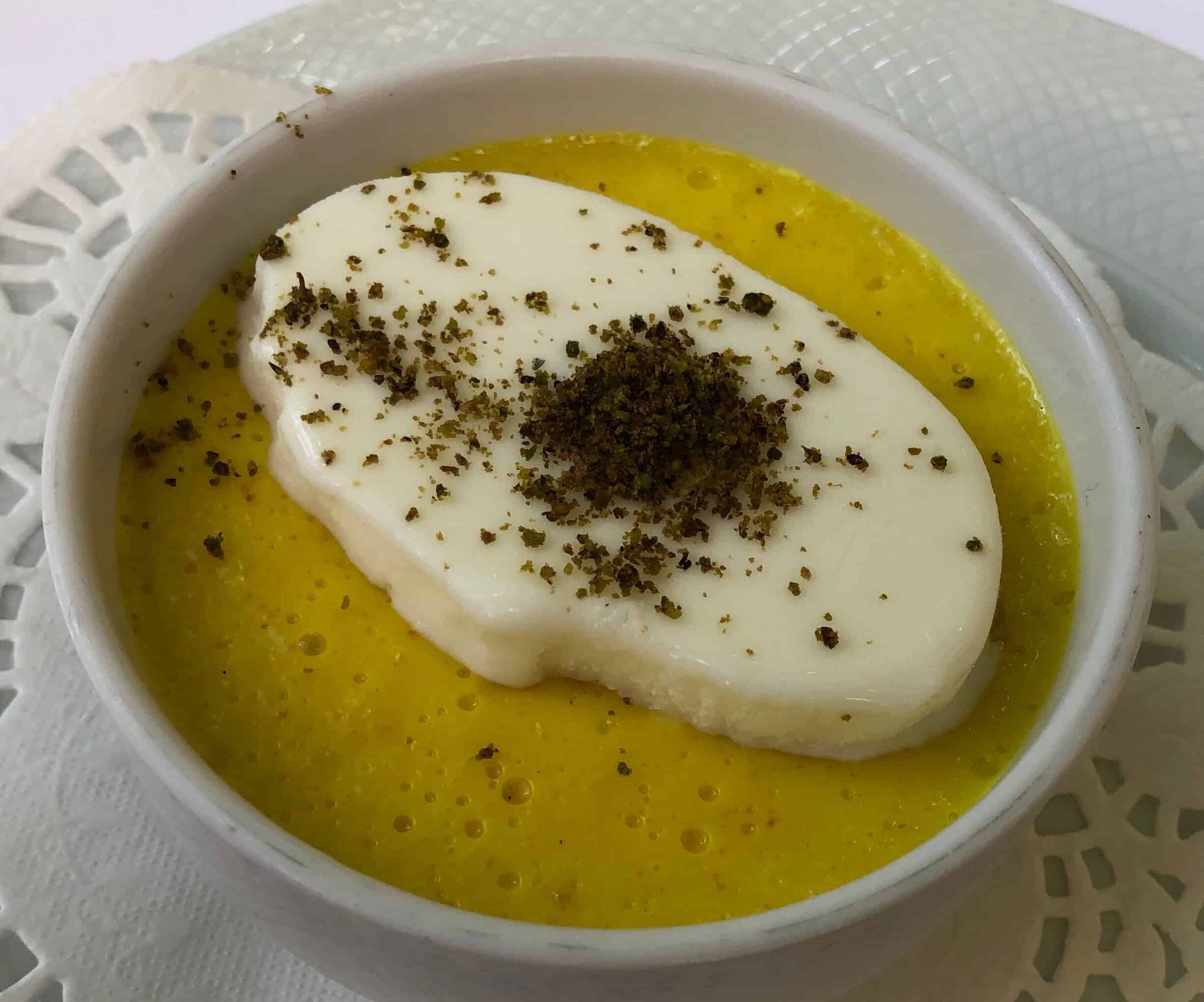
On another visit with Marisol, we started off with the almond soup (1539) and chestnut soup (1469). We also shared Circassian grilled cheese served with mushrooms. Both soups were surprisingly tasty and the cheese and mushrooms were fantastic.

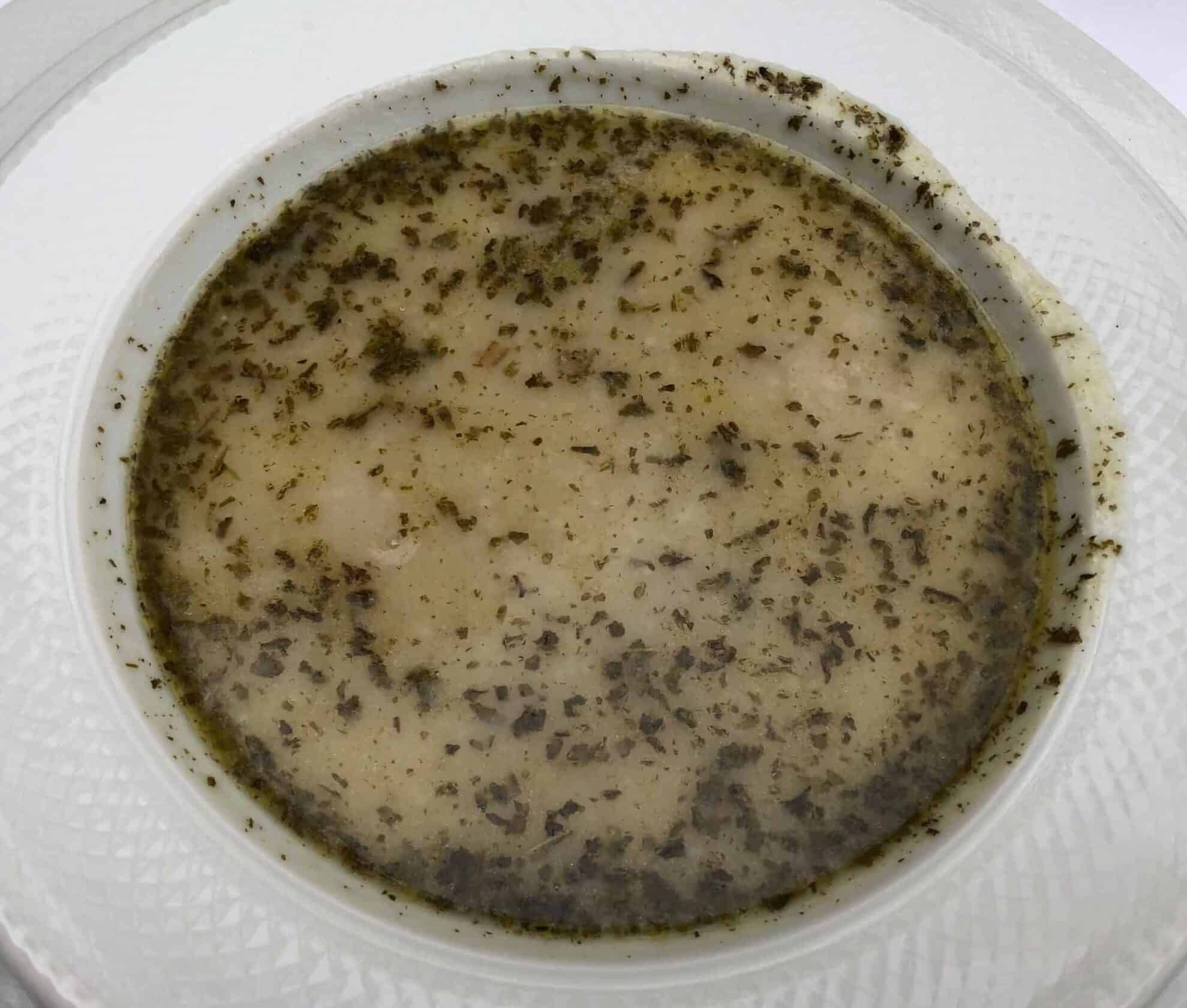
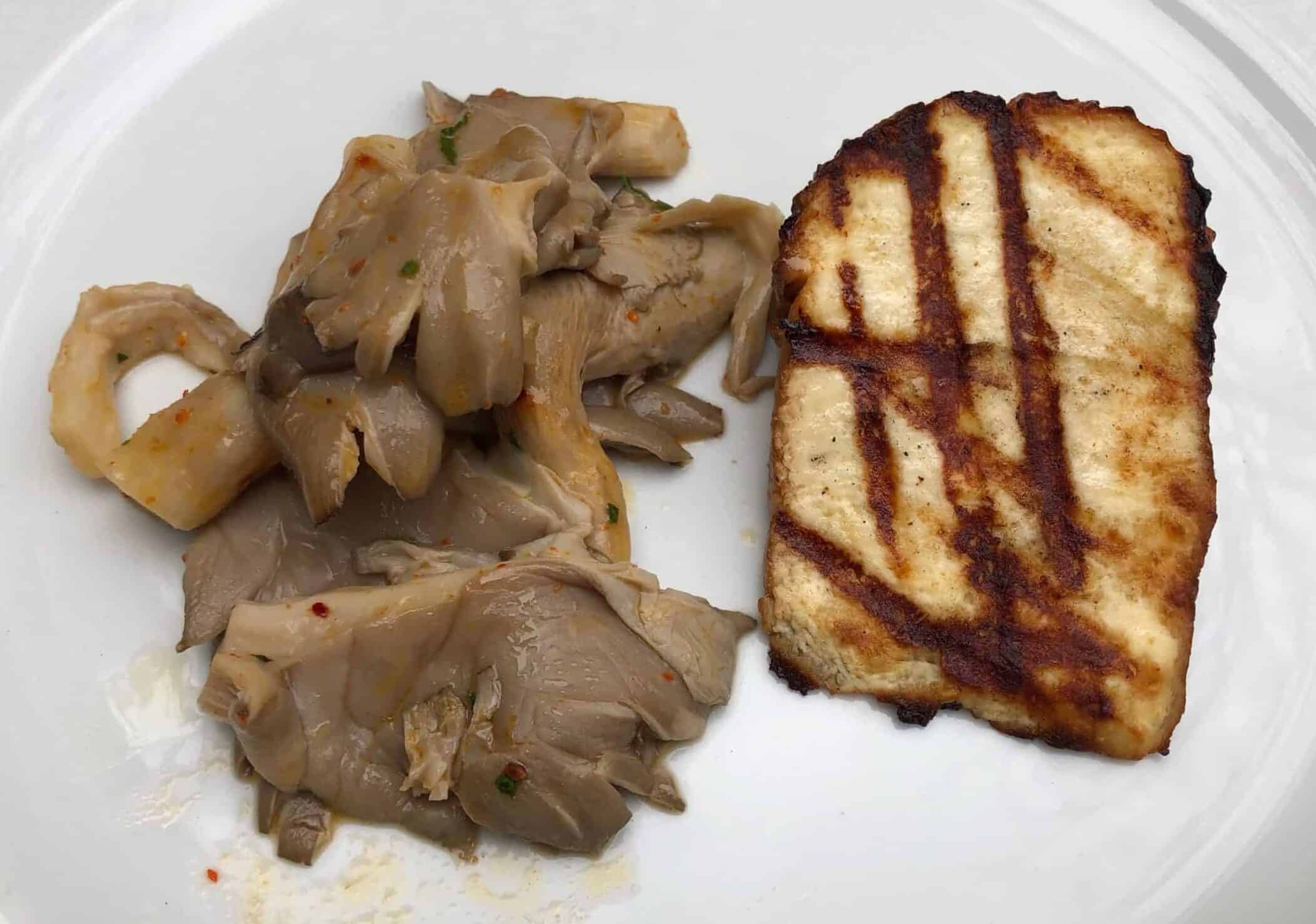
My main course was külbastısı lamb (1844) while Marisol had the stuffed melon (1539). The stuffed melon stole the show. For dessert, we had the peach ka’a.


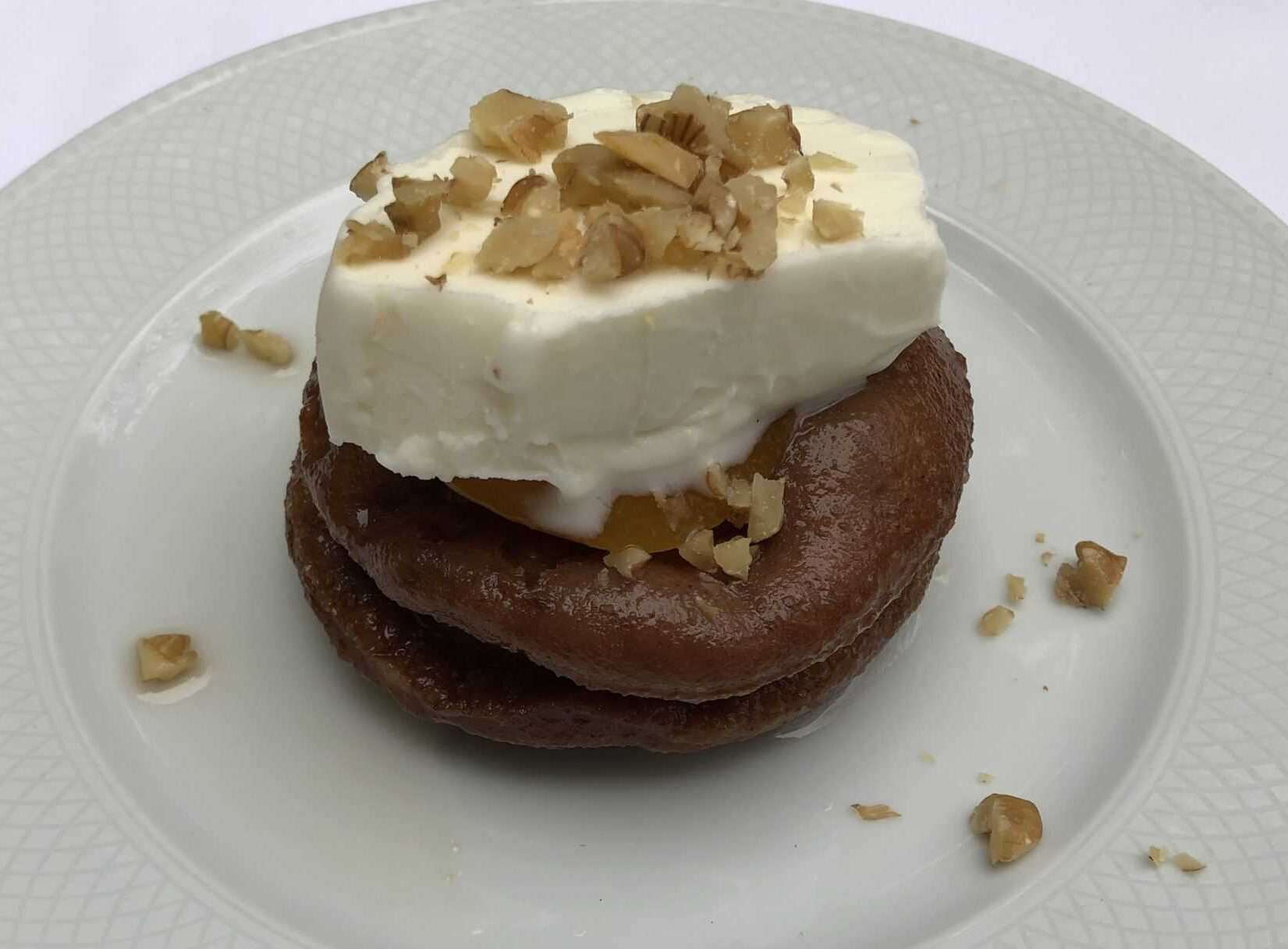
My Thoughts on Asitane
Overall, it’s an interesting experience sampling these unique recipes although it’s very expensive by Istanbul standards. There are some uncommon combinations and not every dish appeals to all who dine there, but it’s fun to try some of the foods that Ottoman sultans would have eaten. I plan on making more visits in the future and trying more of the seasonal dishes on offer.

